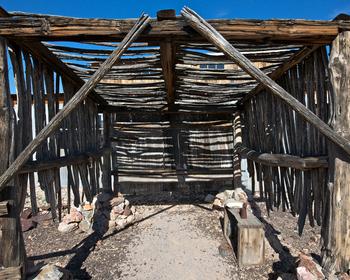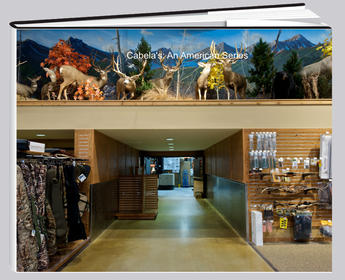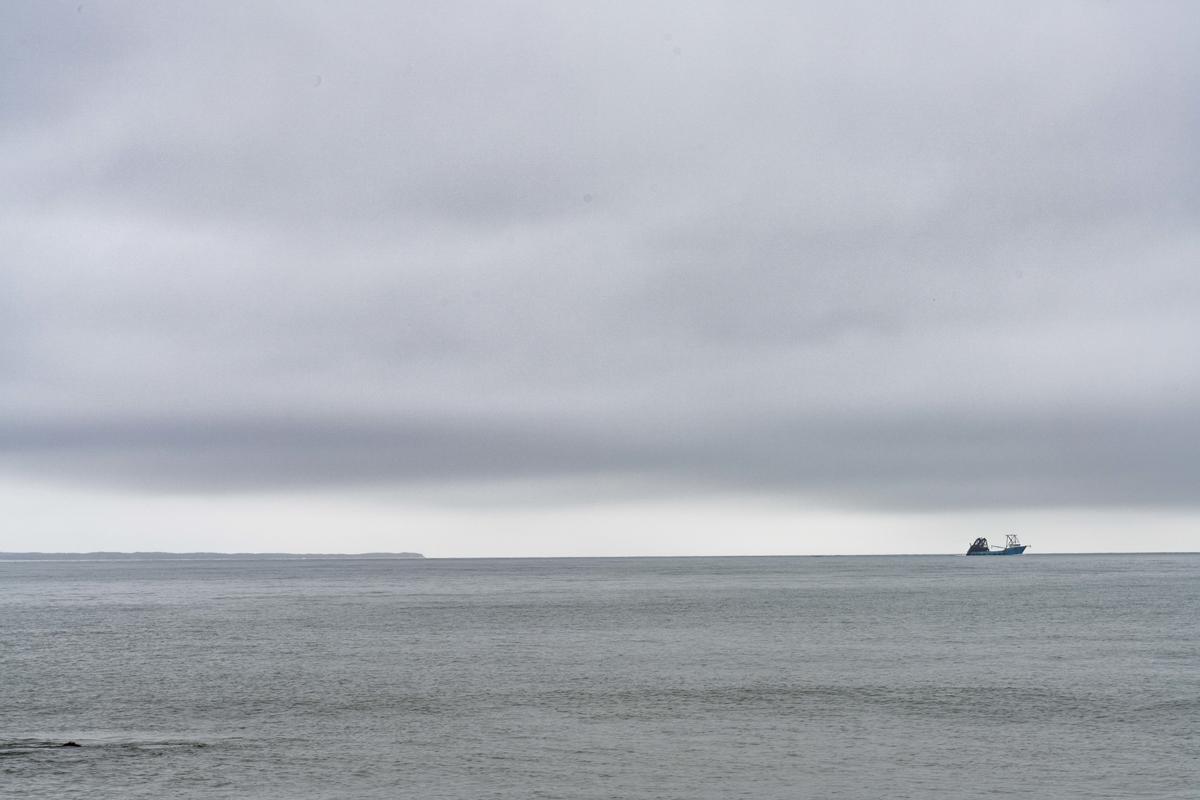
I am at the end of 1 1/2 weeks on Martha's Vineyard. House guests, great food, a three day Nor'easter, some work on the place and a few efforts at making pictures, as I have been on my own for the past four days. Back to the mainland tomorrow.
If you remember, last spring while here, I worked at Philbin Beach, where a stream was running down into the ocean, especially after it rained.
Some New Work
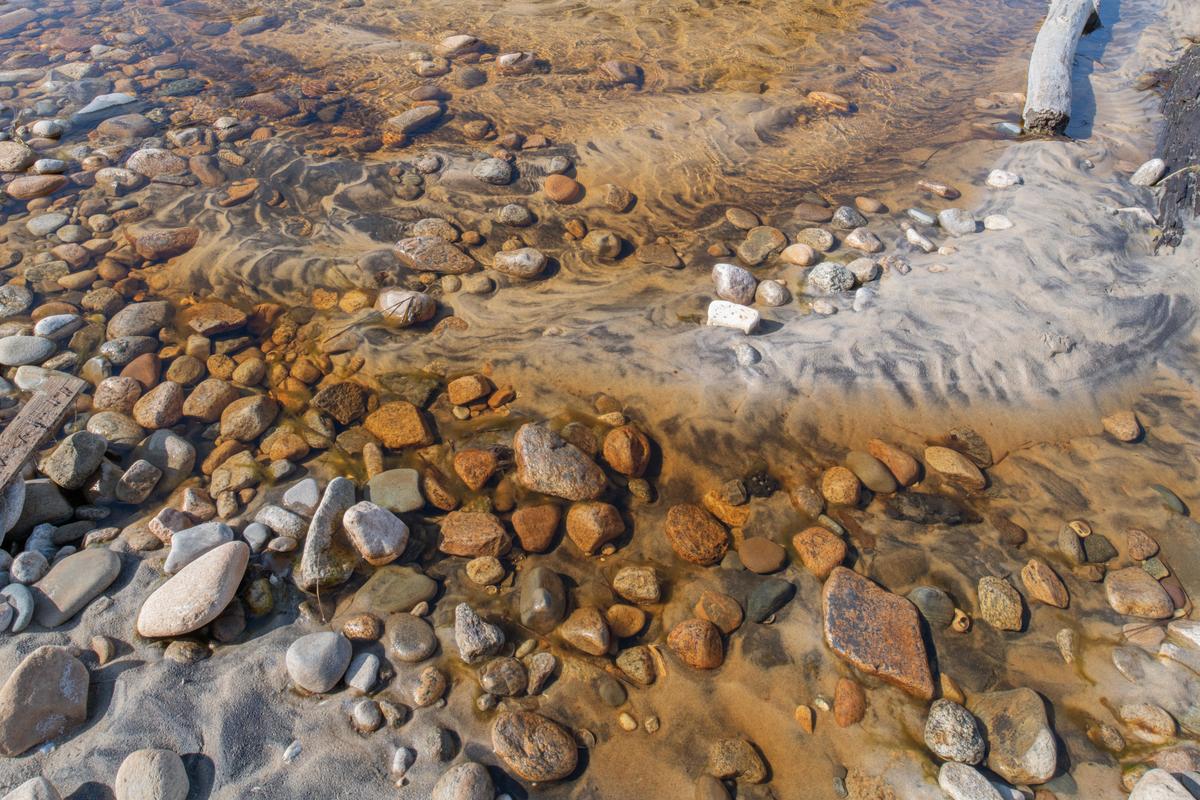
That stream this time, six months later, was not running down to the sea, but I found another one today, closer towards the clay cliffs:
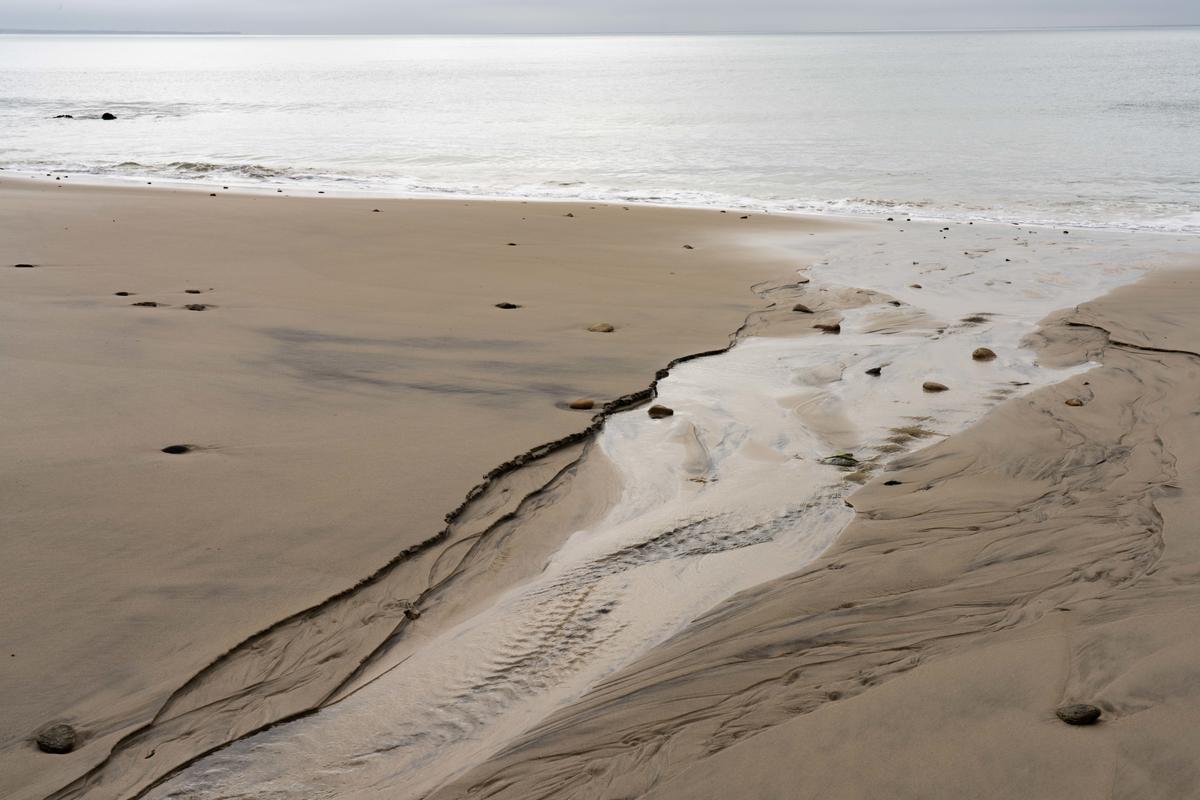
Very often, after a storm, there is calm and today was exceptionally wind free. In contrast, this is what the south shore of the island looked like just a few days ago: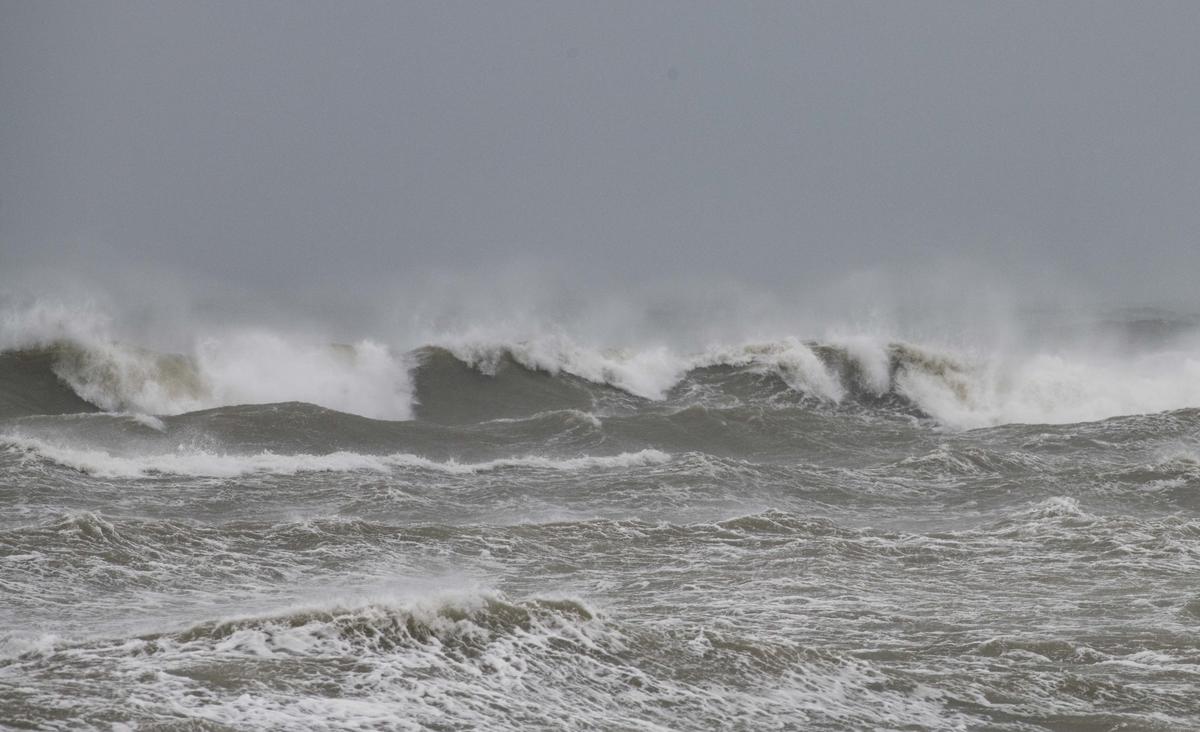
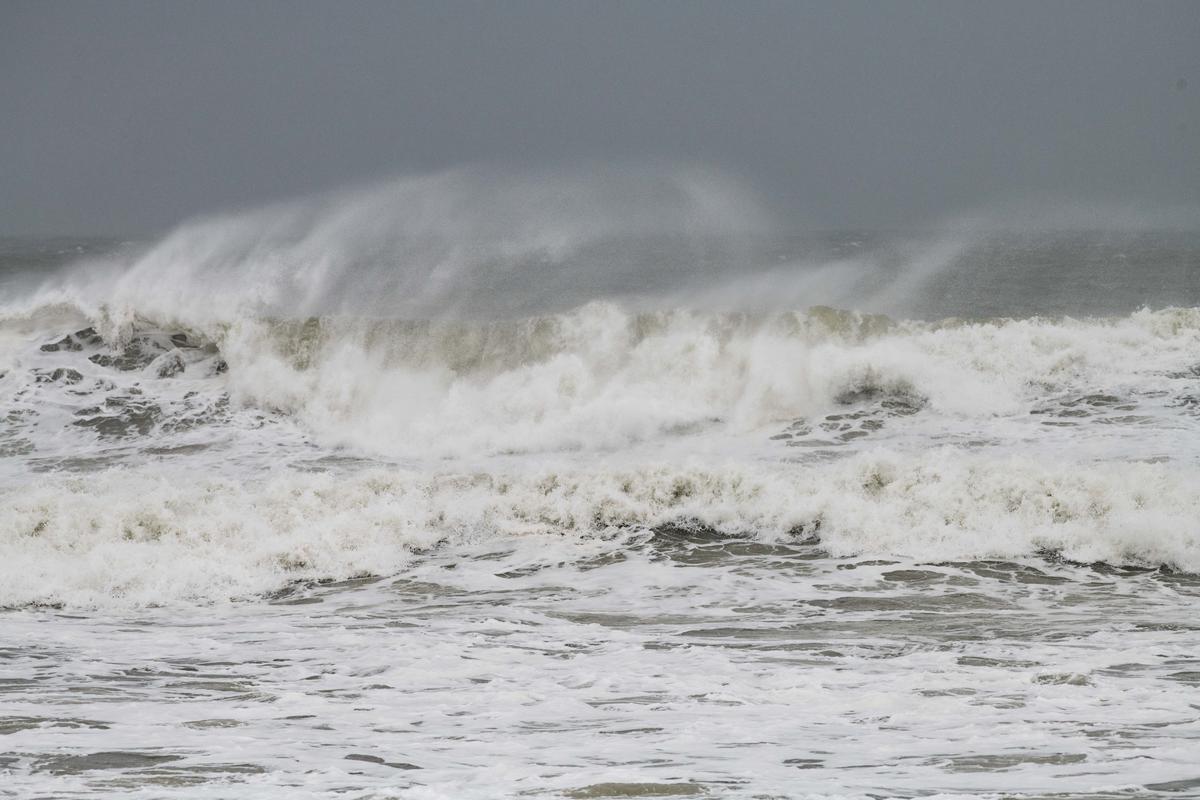 It was wild. The wind was coming from on shore so it whipped the water right off the top of the breaking waves.
It was wild. The wind was coming from on shore so it whipped the water right off the top of the breaking waves.
There is a walkway to the beach from the parking lot at Philbin that is irresistible:
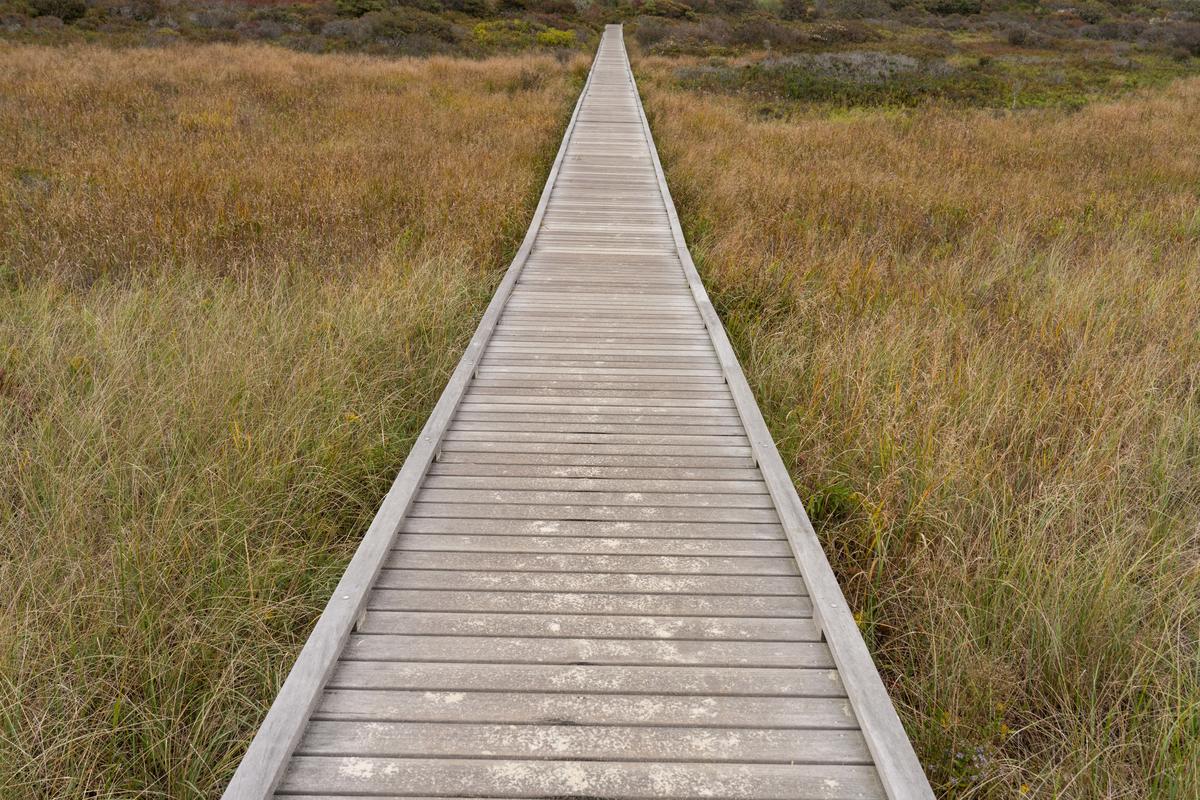
This isn't a camera review, but I did want to mention that I have been photographing with the Sony A7r mk IV this time here on the island and I am finding it really wonderful to work with. This is a far more mature and refined tool than the two previous versions. Mostly I am using the 24-105mm f4 lens.
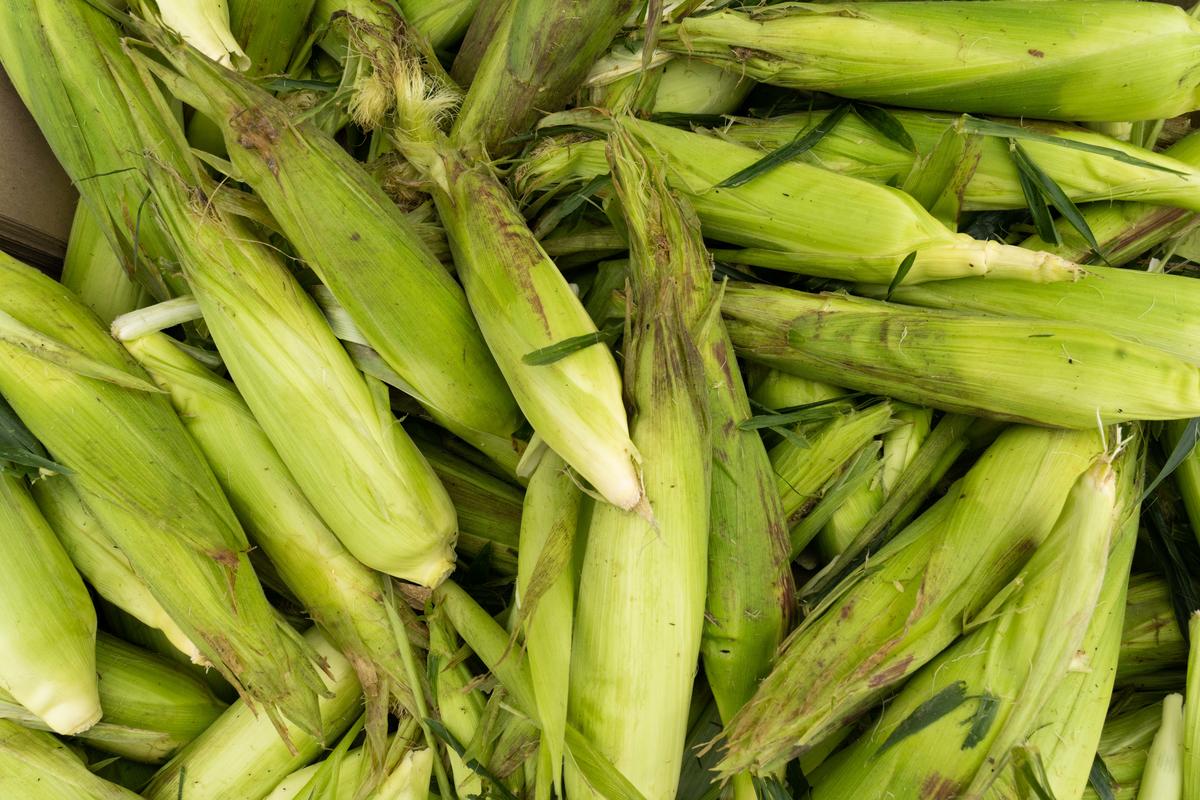
The produce pictures are from the Farmer's Market in West Tisbury, the last market of the season.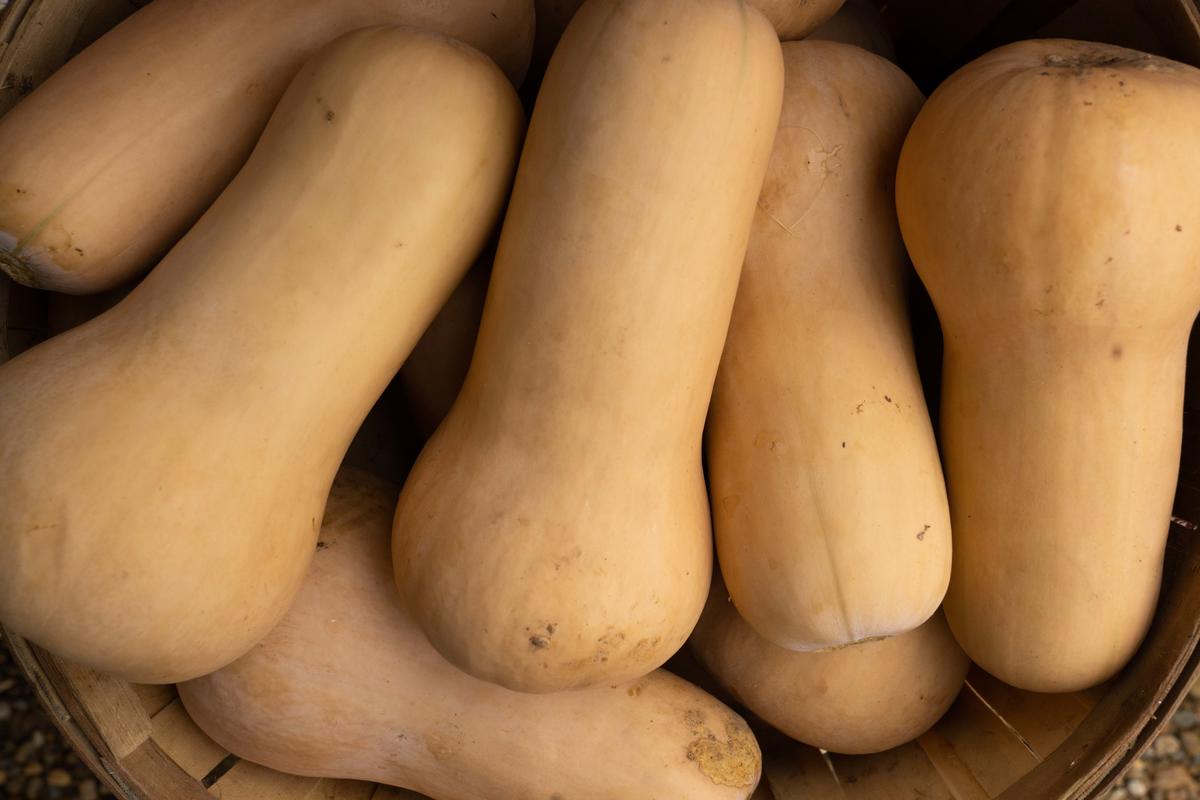
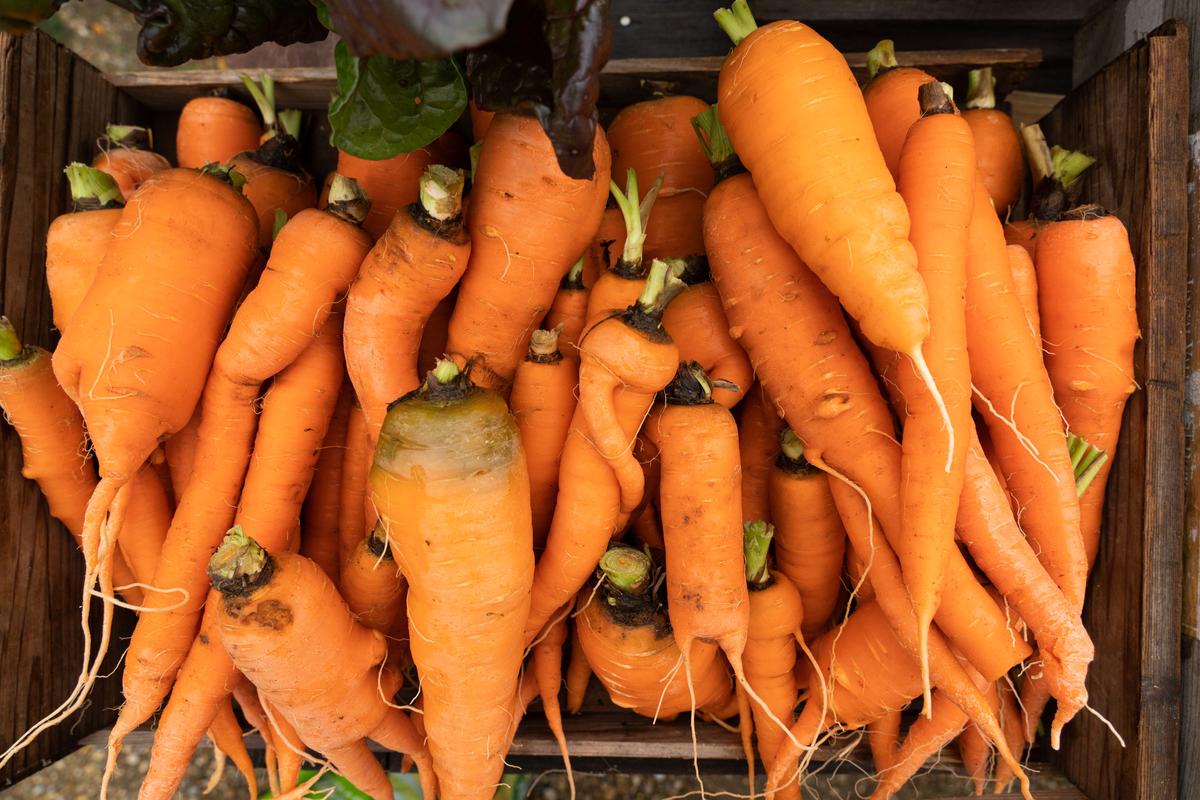
I know, I am not breaking any new ground here but I am keeping my hand in and getting familiar with this new tool.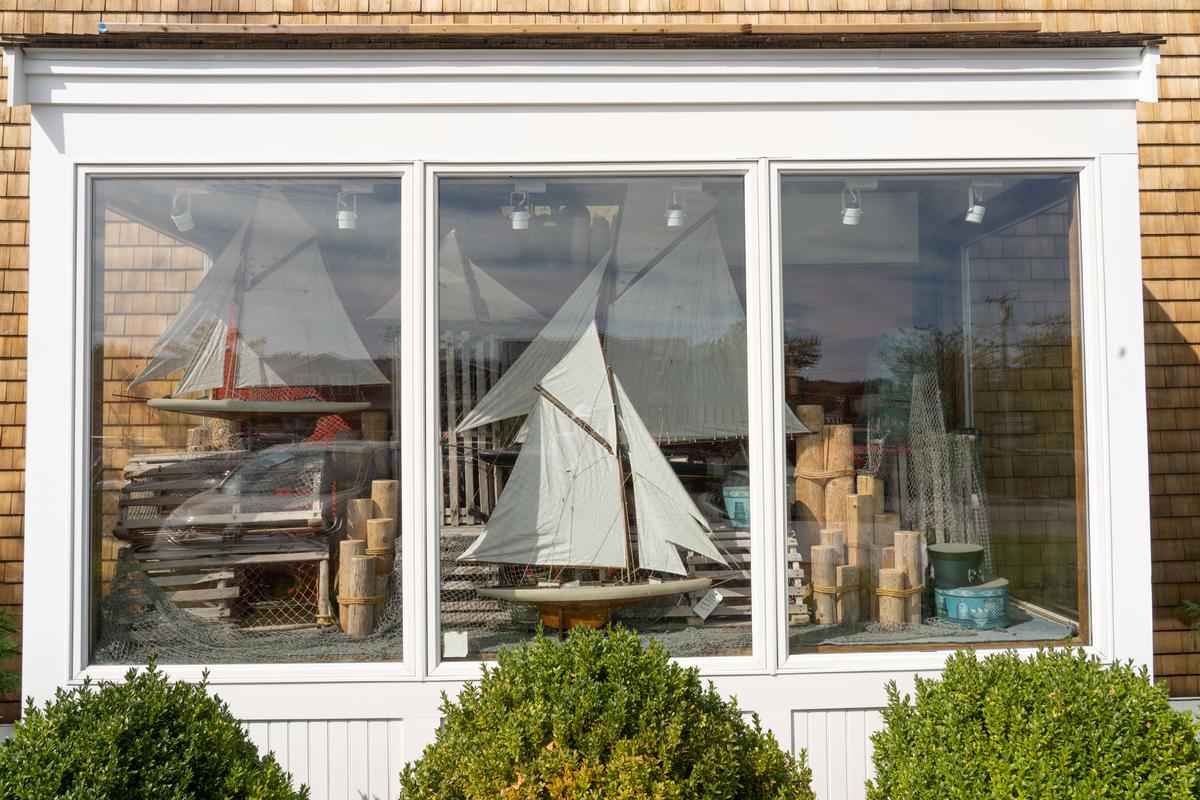 Edgartown
Edgartown
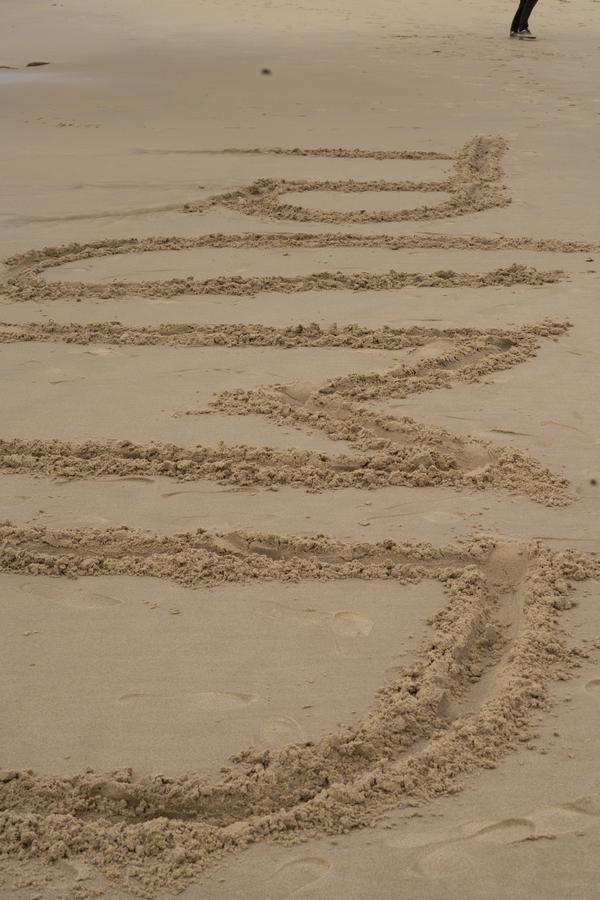
Trump made an appearance one morning at Lucy Vincent's Beach. No opinion, just the letters "Trump".My friend Gail Hill was down from Toronto. Gail's a wonderful artist:
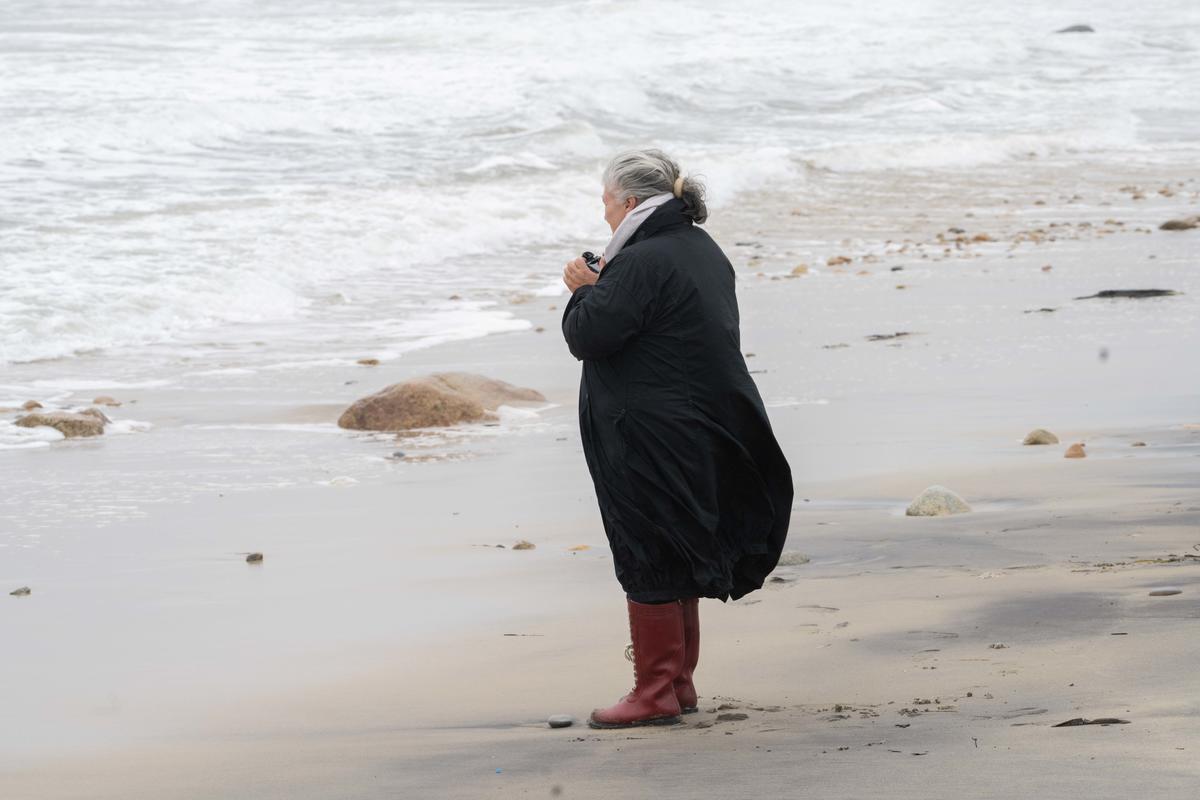
who greets you each morning on the Vineyard saying, "another perfect day in paradise."And, you know, she's right.
I will miss the Vineyard until I return in the spring.
The third chapter in the book called Trees, Sand and Snow published in 2017.
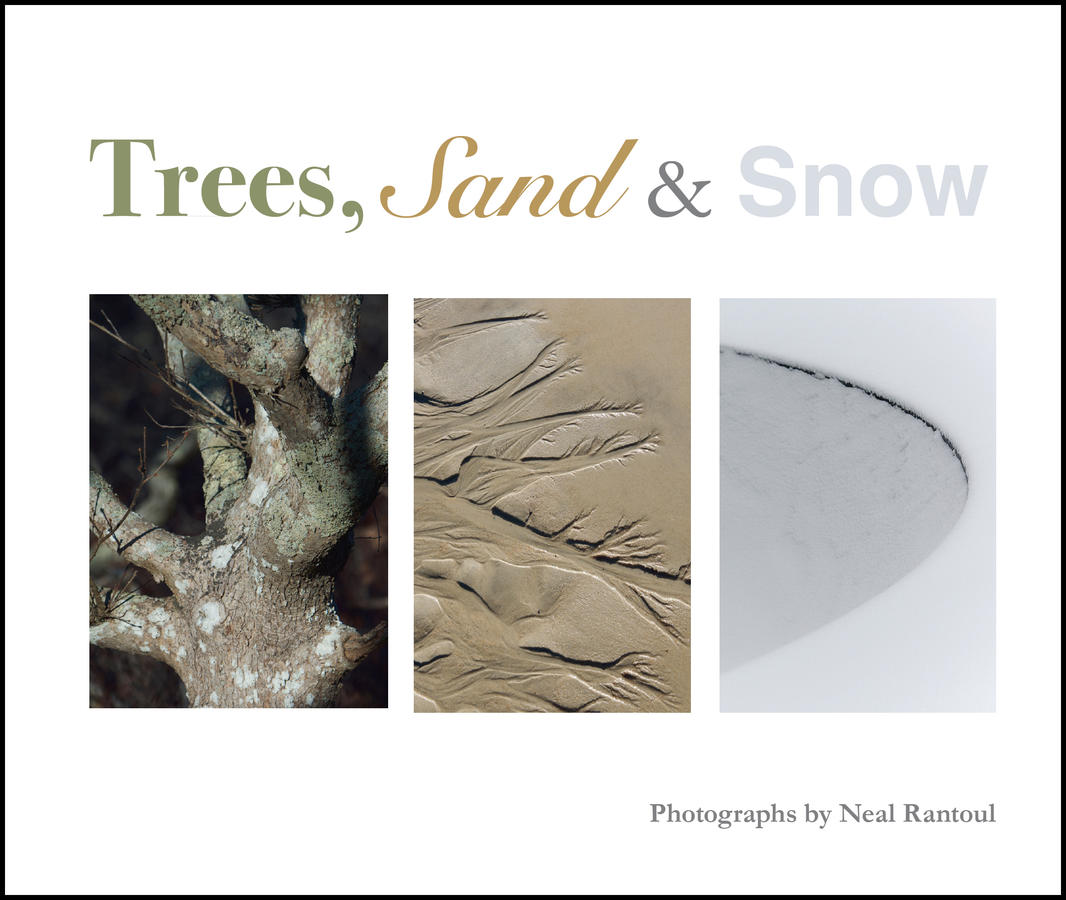
The series is on the site here.
Introduction to the chapter:
Snow
I was a little shaken by the power of the two groups of pictures I’d made on Martha’s Vineyard that day. When back home in Cambridge, a few hours away from the island, I did what I have done so many times before: I worked the files. This simply means getting the pictures I made into the computer, working on them with a few types of software and printing them. The room I do this on at my home looks out on my condo’s tiny back yard and over a fence into my neighbor‘s, which is larger. One afternoon a few days before Christmas, as I was working on the photographs I’d shot from Squibnocket, I looked up from the computer monitor to see that it was snowing. This was the first snow of the season and, as it was cold, it was coming down in small light flakes.
I always love the first snow in New England, the clean smell of the air, the quiet it brings. As the snow started to stick and accumulate I started thinking about where I might go photograph that afternoon. I am still in a place where I am so appreciative of having this freedom to just get the camera and go whenever I want. I’ve been retired from teaching for 5 years. At any rate, I headed just a mile or so away to the City of Cambridge’s skate park, a new park for the city and built under the elevated Rt 93 as it comes down into Boston, across the river. I’d been photographing the park for some time, both with people using it and not. I knew this day with the snow sticking no one would be there.
I arrived and the snow was slowly building up to cover everything and make the form, steps, ramps and curves disappear under its blanket. But not yet.
I started to work, much in the way I had photographed the laid bare sand at Squibnocket two weeks before. Just as I did then, I photographed the overall and then moved in to look at the small. Here I had to be careful and plan my approach so as to not find my footprints in my pictures. Pristine and pure, the skate park was becoming increasingly obscured by the snow falling. Time again played a part in the making of these pictures, the contrast of the exposed beach being covered over by the rising sea and the skate park disappearing under the blanket of snow. Just as the ocean had receded to show the sand below the snow was drifting down from above to cover the skate park that afternoon in Cambridge, Massachusetts.
Time is a big concept in photography because often we freeze it in a fraction of a second to stop time and motion or spread it over a period of seconds or minutes to blur or make our pictures spread through time.
In conclusion, these three chapters called Trees, Sand & Snow exist due to time’s prevailing place in all things we do in this life on this planet. Reaching 70 years old, looking back at my career as a teacher, an artist and a father, the pictures I made on Martha’s Vineyard and Cambridge stand for me as symbols of, quite simply, the character of time through life.
Once again we start out with a wide perspective on a place:
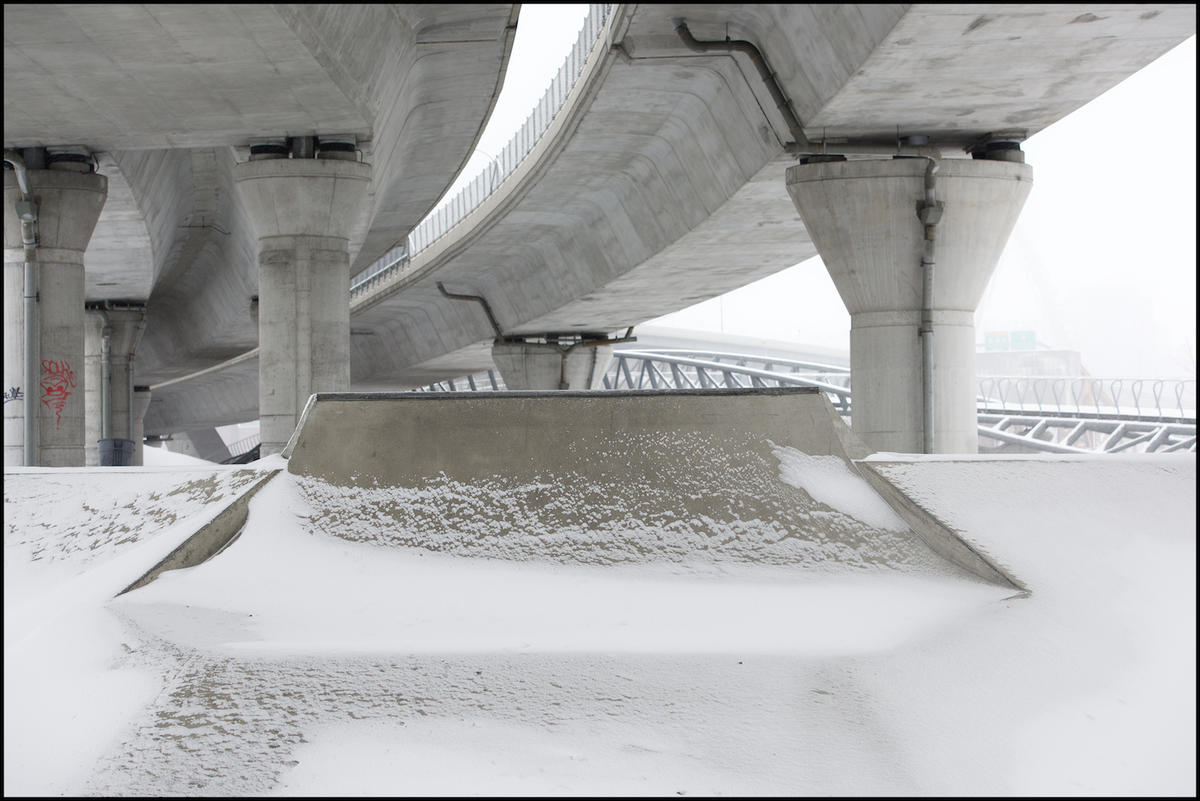
Then move in to find hard concrete covered with the softest of light powdery snow, the metaphor of the uncovered sand two weeks before on the Vineyard inescapable, time doing its thing once again.
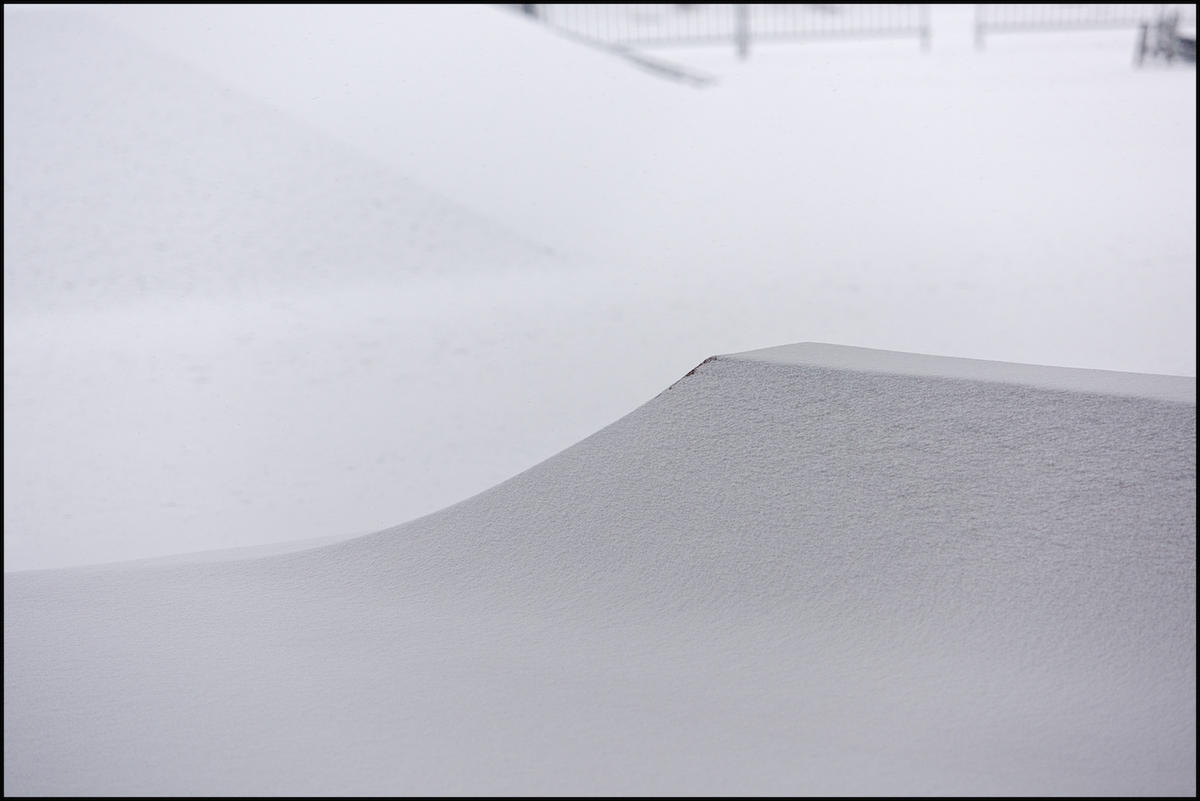
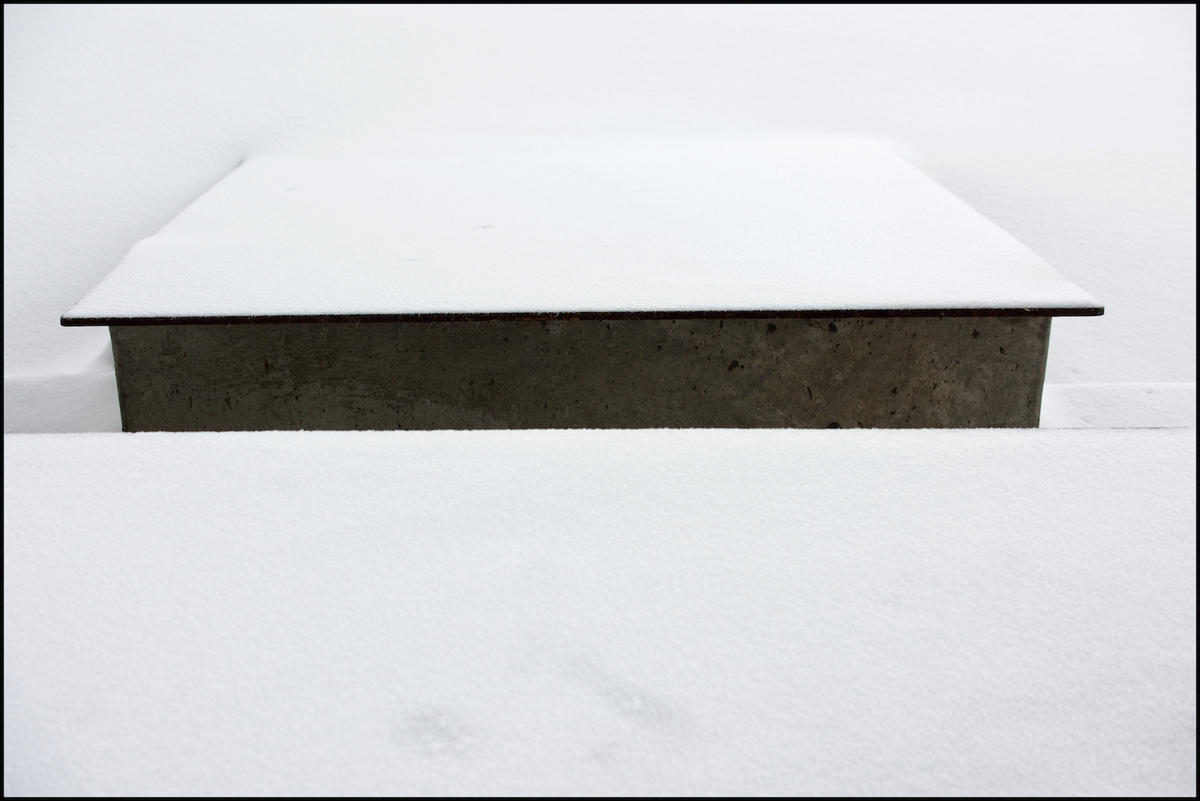
The shortest time period of all three bodies of work, all soon to be obliterated as the snow continued to fall, water in this different state but not so unlike the water covering the sand on the beach that day as the tide rose.
So, to finish these three posts: I had never made a book or, in fact, a portfolio of photographs quite like this, three disparate series of pictures connected by something like the way time was effecting each. Furthermore, it was up to me to write explaining what it was that I was doing, for I wasn't confident the reader would find the connections I was making without some help. Writing and photographs, not my favorite combination, for I much prefer the photographs standing on their own. But turning 70 years old gave me a little license to stretch my work and push it towards something less known.
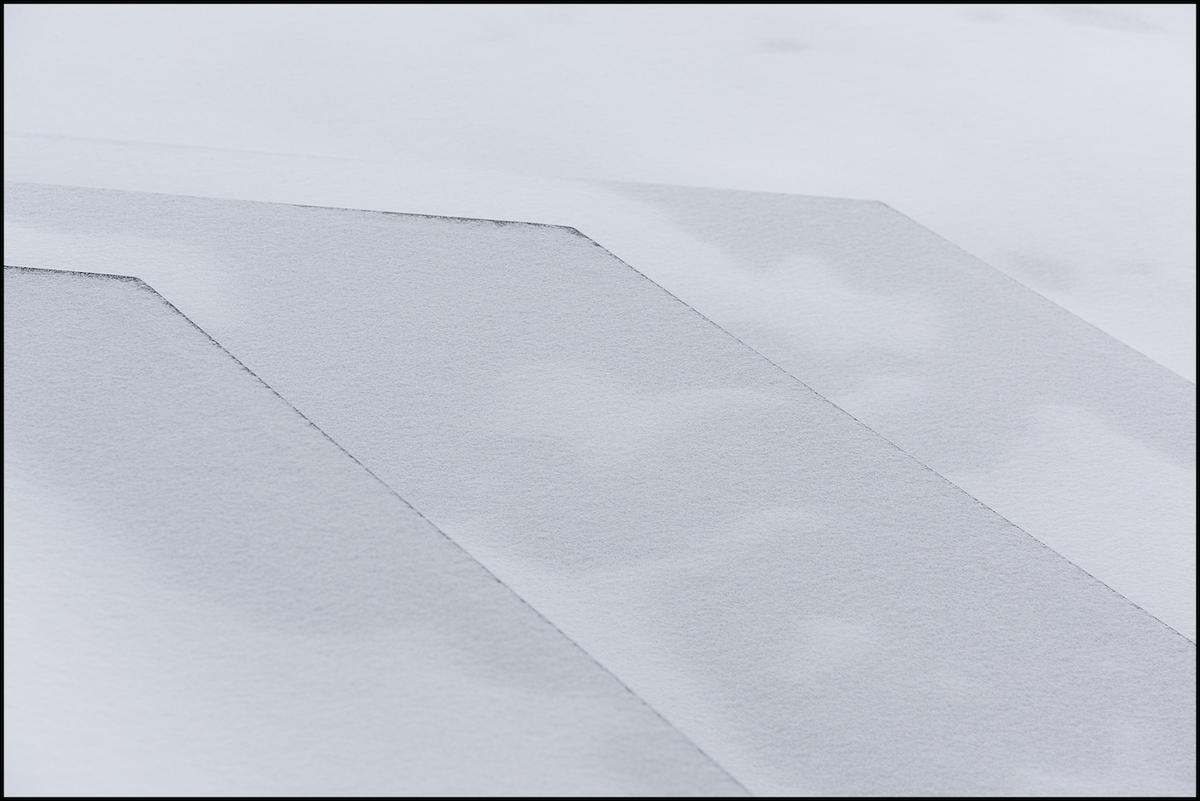
I am most curious about how this work is received by you, my readers. Let me know, here.
And thanks for reading and subscribing.
A word about the status of the book. The bad news is the first edition is now sold out. The good news is that we are about to go into a second printing, with a couple of edits as improvements. We can take your orders via email to: Book Orders. The book will be signed and numbered. It will be $36.00 plus shipping.
The second chapter in the 2017 book called Trees, Sand and Snow.
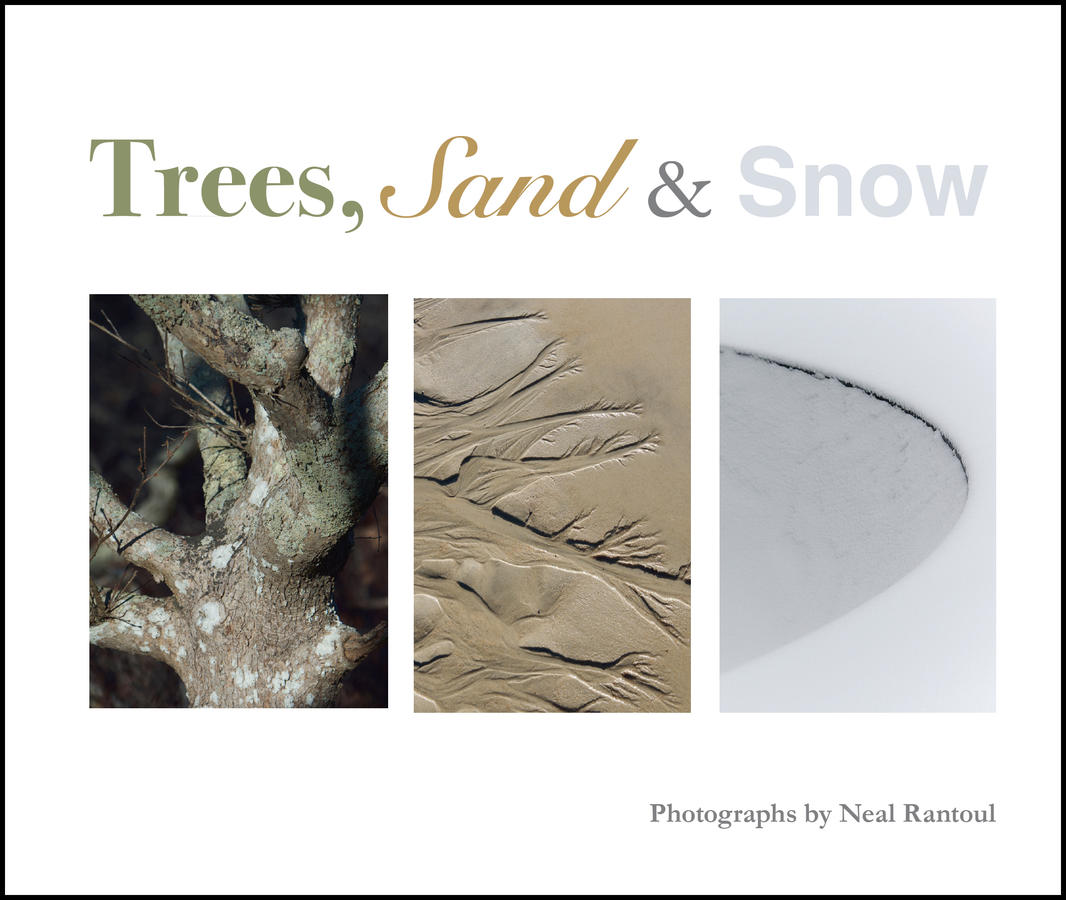
The full series is: here.
The chapter starts with this introduction:
Sand
The same morning I’d driven to Chappaquiddick to make the “Trees” pictures I rode the ferry back to Edgartown and drove up island to the beach in Chilmark on the south shore called Squibnocket. The access to the beach is from a parking lot that sits right above it. Chilmark has two town beaches on the south shore, this one and Vincent’s Beach, famous for being nude at one end and one of the most beautiful beaches along the New England seacoast.
I wasn’t at Squibnocket to make pictures, but to give it a look, to visit an old friend, to watch the waves coming in and out and as a way to complete the sense that I was on the island, here for just the day before and this one in early December.
But things were different this day as the tide was unusually low, there was no wind and much of the sand was exposed, with small rivulets of water working their way down to the ocean at dead low tide, lower than I’d ever seen it.
Then ensued an internal battle with myself. After getting out of the car and standing above the beach looking down, seeing how special this really was, acknowledging that this beach laid bare was exceptionally beautiful and rare, I went back to the car, determining that this was too much, too cliched, too overdone as a topic for me to play a part. But then, in doubt, I went back to my perch to look down again and realized I’d be a fool not to have at this, to at least try to photograph this unusual exposing of a beach I’d been visiting since I was one year old.
So I did. I got my camera, headed down the stairs to the beach below and started photographing. As has happened so many times before, a world opened up for me.
These things, this way of photographing in series, forming a narrative, has a beginning and an ending too. Generally it is important to set the stage, to show something of the overall, then to move in to show details and make pictures that make analogies to bigger things by being of small parts of the whole. There were planal considerations to work with too, for all of what I photographed at the beach that day was at my feet, spread out in a wide expansive “ground” of sand and rocks and water. Although looking timeless, the characteristic of all that was before me, this world of incredible beauty and richness would soon be covered up by the ocean itself weighed on me as I worked. In fact, by the time I was finishing much of what I had photographed only an hour two earlier, was gone.
In this second chapter we have a different sense of the temporary, an extremely short life span of a tidal cycle compared to one of a time we can dream of but not witness, the life of the stunted oak trees back at Wasque. One, a beach on Martha’s Vineyard, laid bare due to the effects of the moon and sun’s gravitational pull on our planet and the other, a stand of trees nearing the end of their lives early due to erosion. One, measured by the span of a few hours and the other, by decades or perhaps centuries, we don’t know.
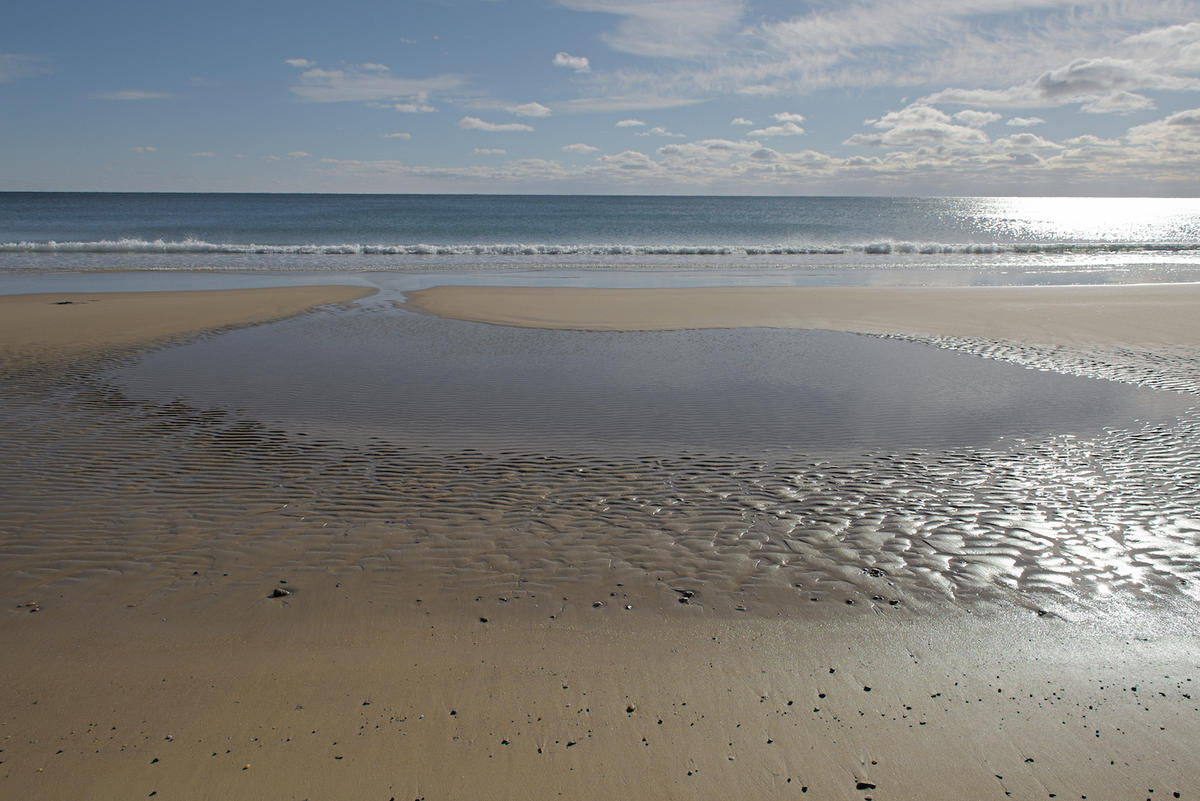
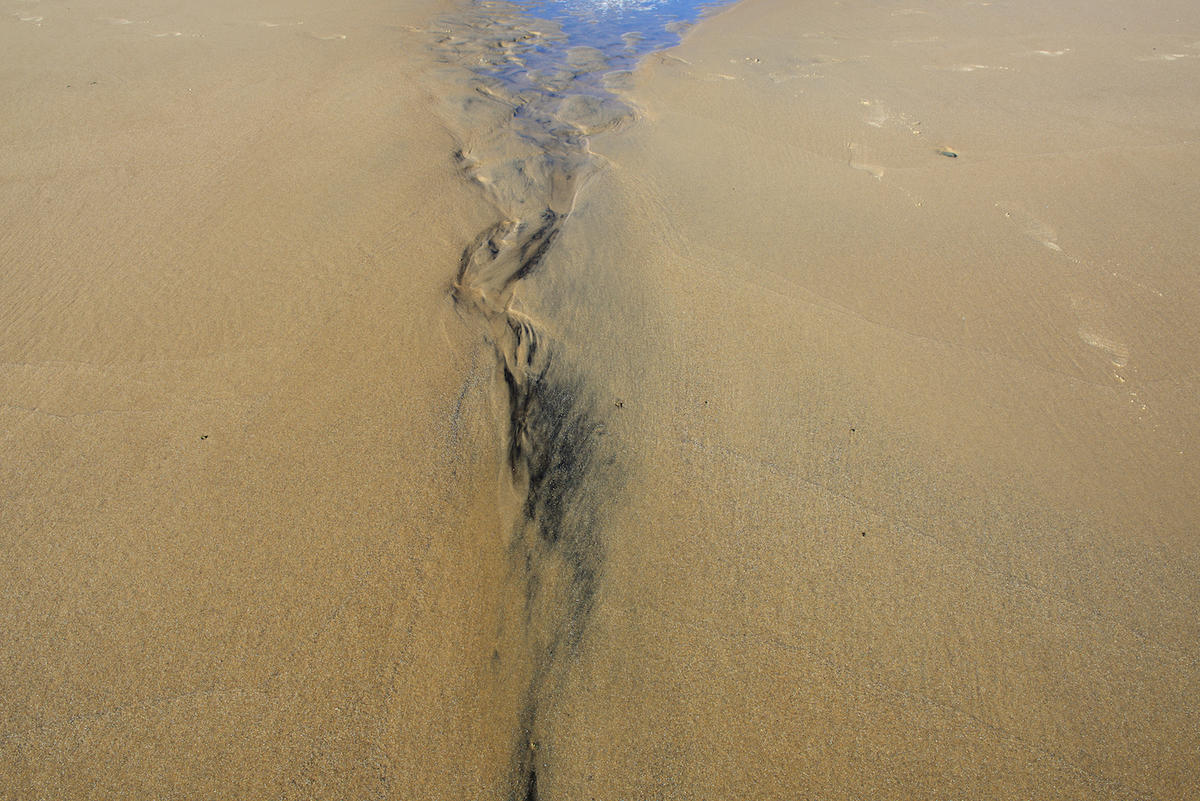
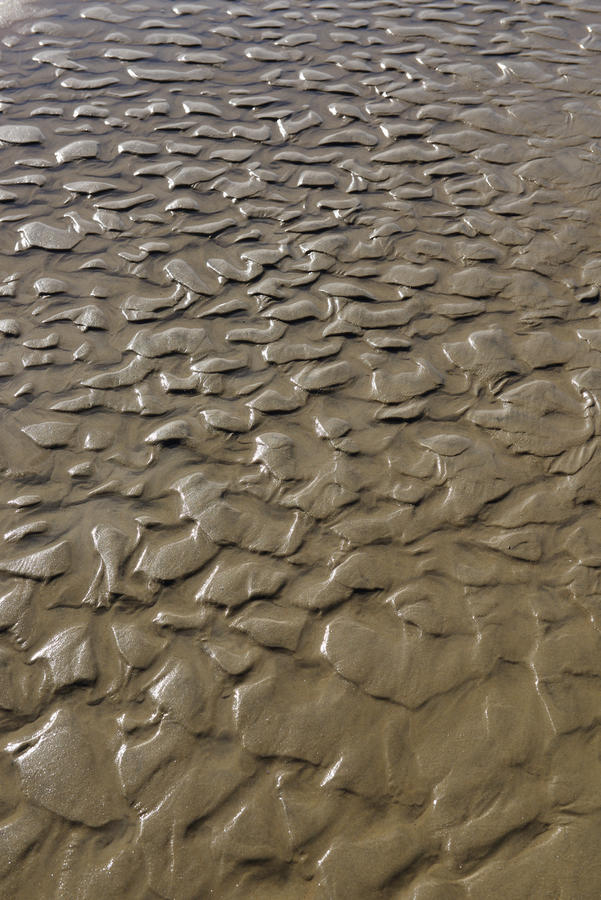
You can understand my reservation at making these pictures. As cliched as sunsets, cemeteries and babies. But I plunged right in.
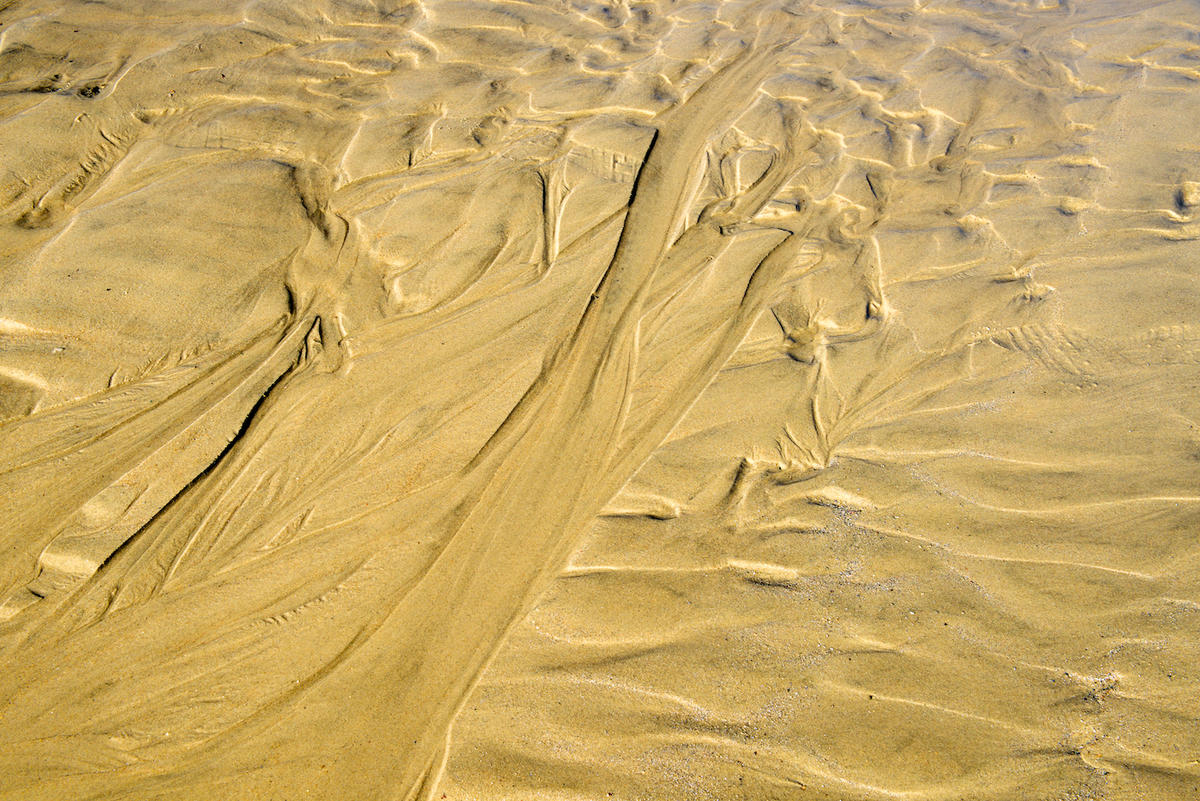
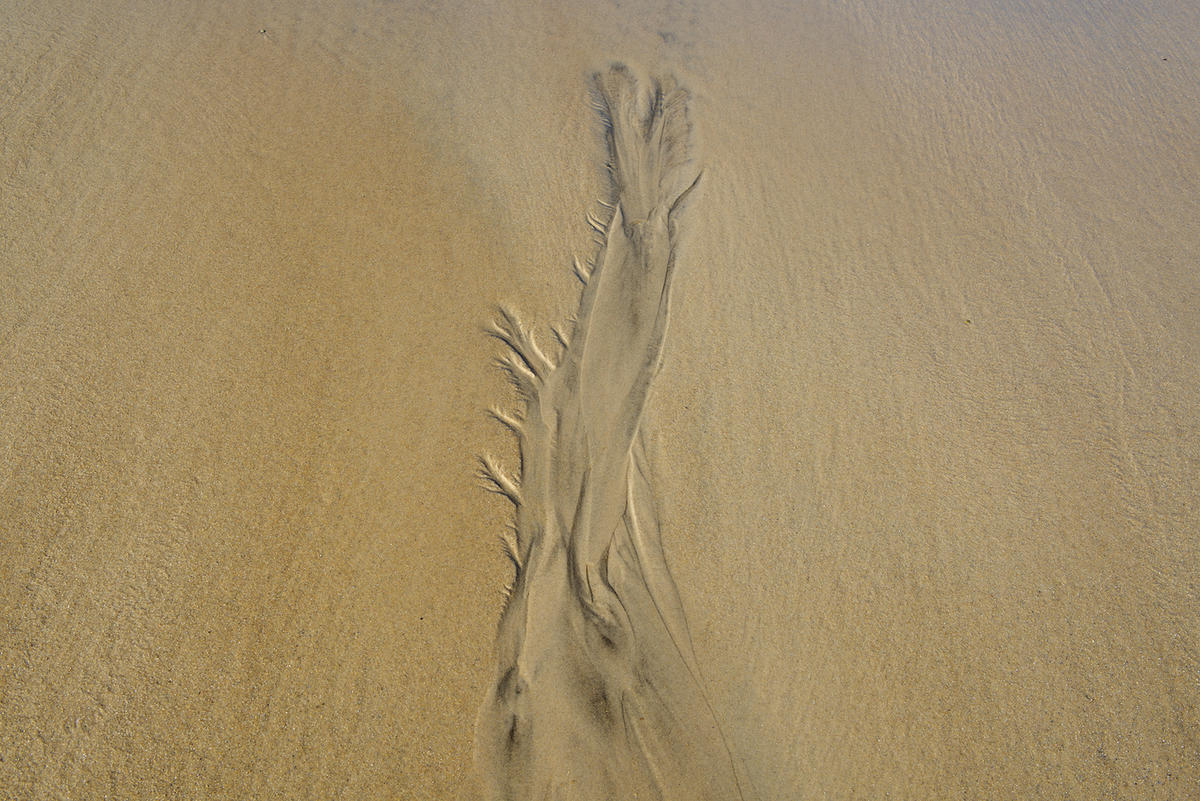
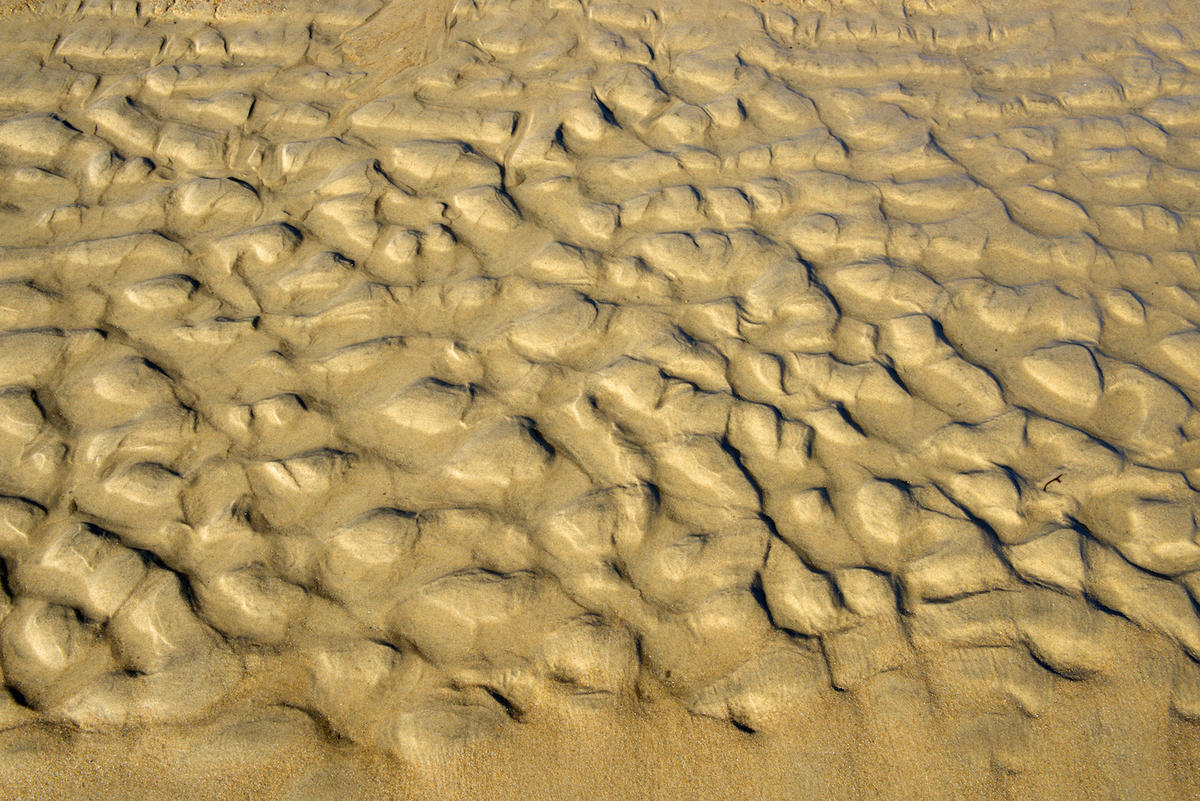
But what a powerful metaphor this was. This sand laid bare by an exceptionally low tide in December. From the trees that would fall into the sea someday to this incredible beauty swept away in an hour or two.
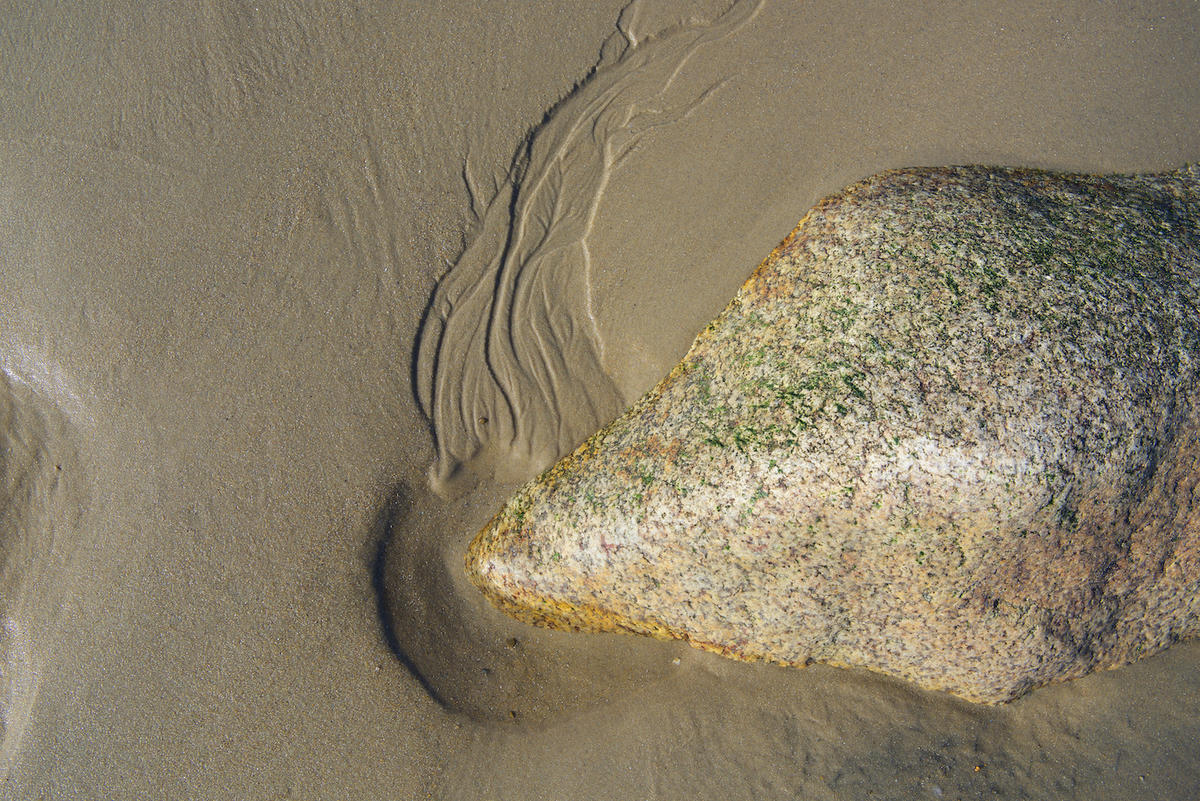
Of course, writing this now over two years later my perspective has shifted. With that distance, are these pictures as emotionally charged now as they were back then? Are they no longer loaded with the back story of the rising tide, impermanence, the sense of impending loss? As it turns out, yes they are.
I wonder if you feel it too?
Next up: the third and final chapter from the Trees, Sand and Snow book called, Snow.
Over the winter of 2016/17 I made a set of pictures we subsequently turned into a book called: Trees, Sand and Snow.
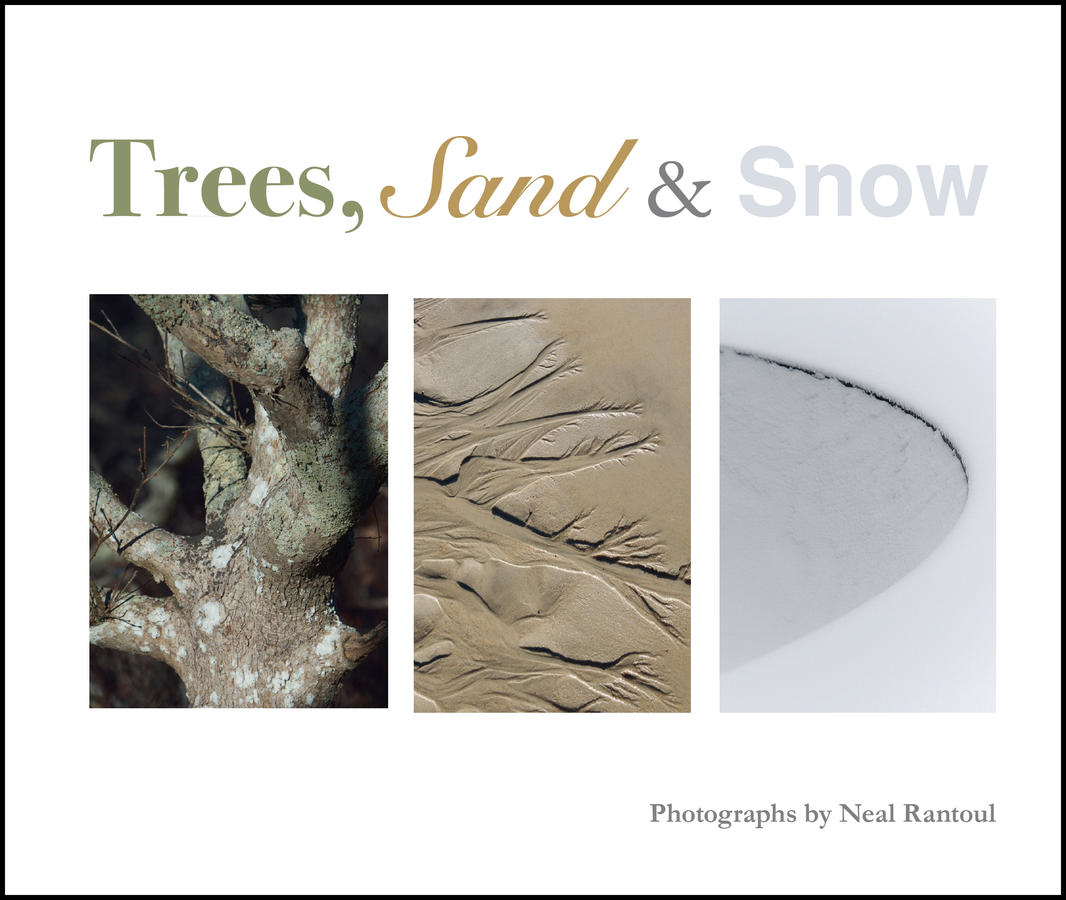
We're going to take a look at all three chapters in the blog with the next three posts, starting with the first chapter called, appropriately enough, Trees
The full series of the Trees photographs are on the site: here
Here is the opening essay:
Trees
The pictures of the stunted oak trees were made in the fall of 2016 in Wasque at the far end of the island called Chappaquiddick, just off of Martha’s Vineyard. While Chappy is a separate island accessed by a three-car ferry from Edgartown it is often clumped together by islanders as being part of the “Vineyard”.
The first few photographs in this chapter bring us on an early morning to a field with some trees on the horizon being hit by the sun as it rises, warm and yellow. These serve as the introduction to all three chapters, not only to this one. We then reach the remote end of the island called Wasque, the Vineyard’s most desolate and severe environment, with strong prevailing winds, erosion and salt spray limiting the height of the main topic of this chapter, the stunted oak trees in a stand at the edge of the bluff. In past years most of this large stand have been taken out by storms eroding the bluff away, the trees falling down the bluff like lemmings into the sea. In very recent times a cut into a nearby pond has closed allowing the formation of the barrier beach you can see in my pictures. This has given these oak trees a reprieve from their march to the sea, but the cut to the pond will open again and erosion will resume, sealing the fate of these magnificent characters shown in the photographs.
I think of the stunted oak trees at Wasque on Chappaquiddick Island as condemned, their future limited by natural forces and serving as a symbol for the destruction the rising ocean will cause. What I find especially poignant is that they do so in silence.
The trees themselves, photographed to emphasize their individuality, stand as strong players in an alien place. I can’t help but think of the cold starry night in mid-February, these trees buffeted by the frigid cold wind coming off the sea, season after season, year after year. They exist as survivors, tough in ways we can’t truly understand.
So, we start with the beautiful but sobering pictures of these trees in their inexorable march towards the bluff and their subsequent destruction, be it next year or ten years from now. Time doesn’t stop because we can’t see the hands on the clock moving.
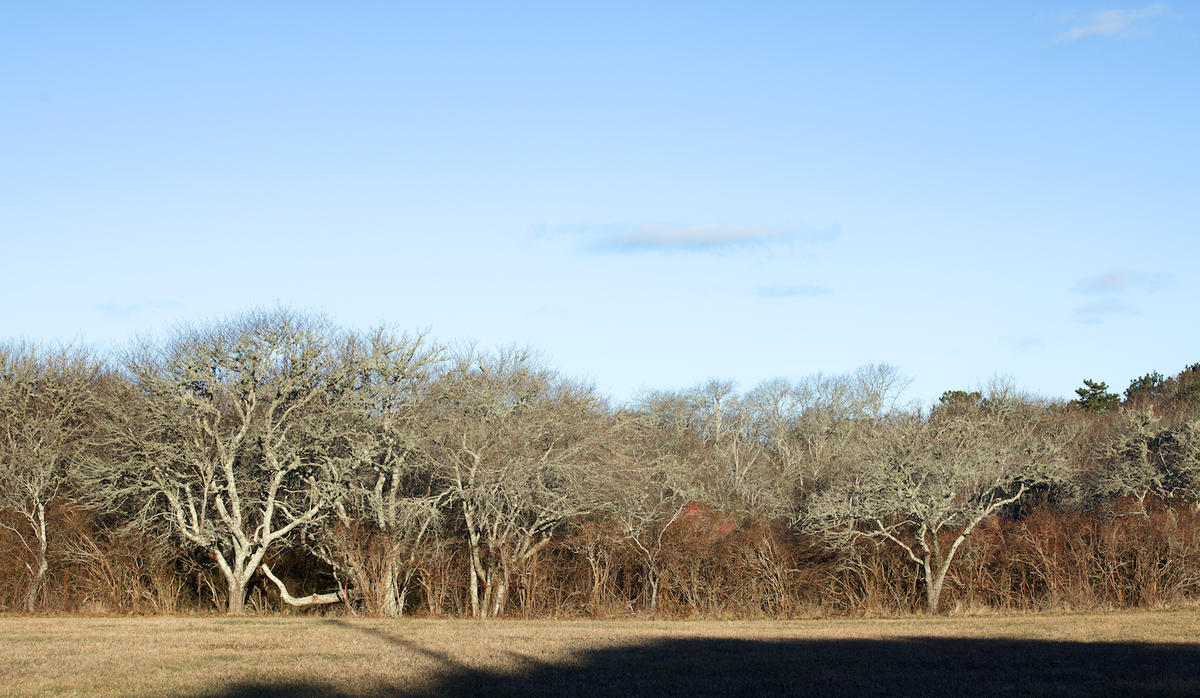
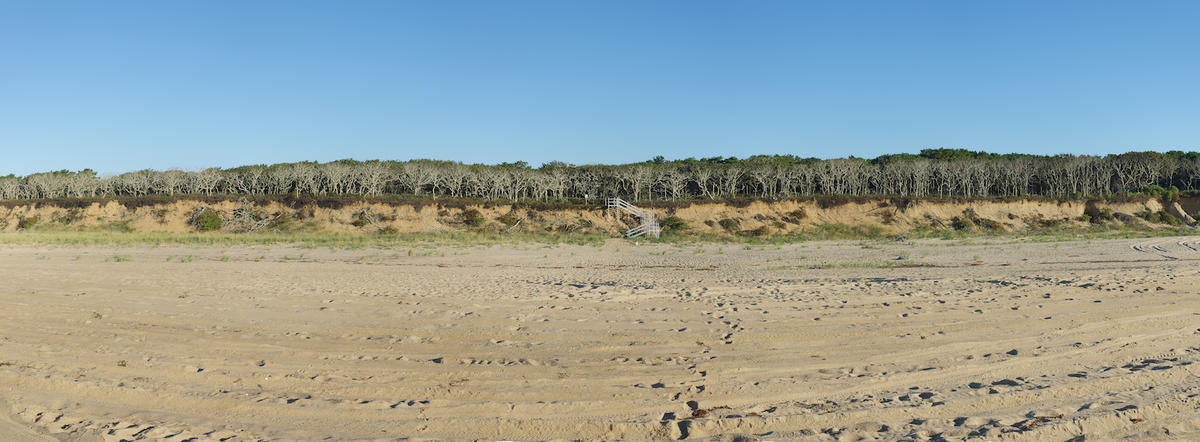
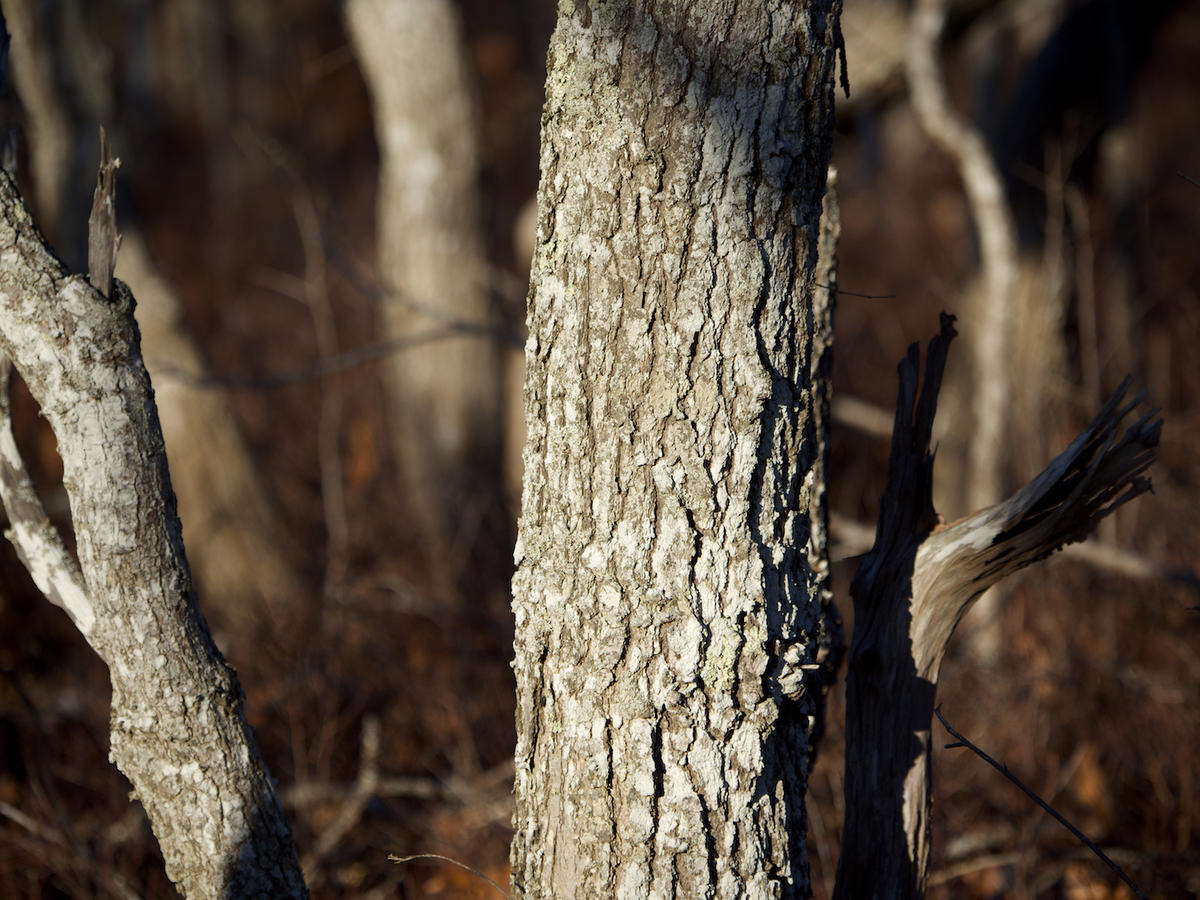
After the initial photographs placing us at the end of the island and looking at the stand of stunted oaks with the ocean at my back, the pictures move into individual trees, as characters with their own personalities and attitudes, some in defiance of their plight and some in acceptance of it.
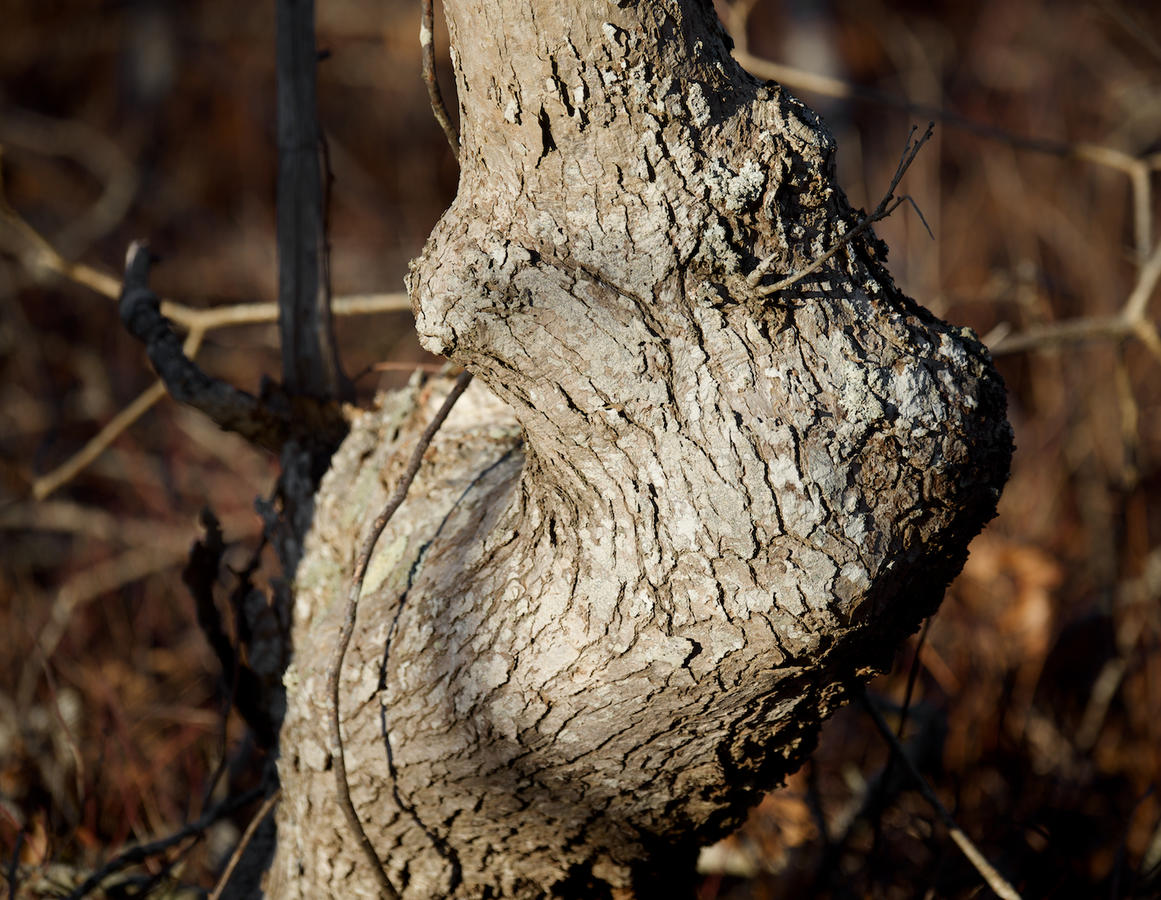
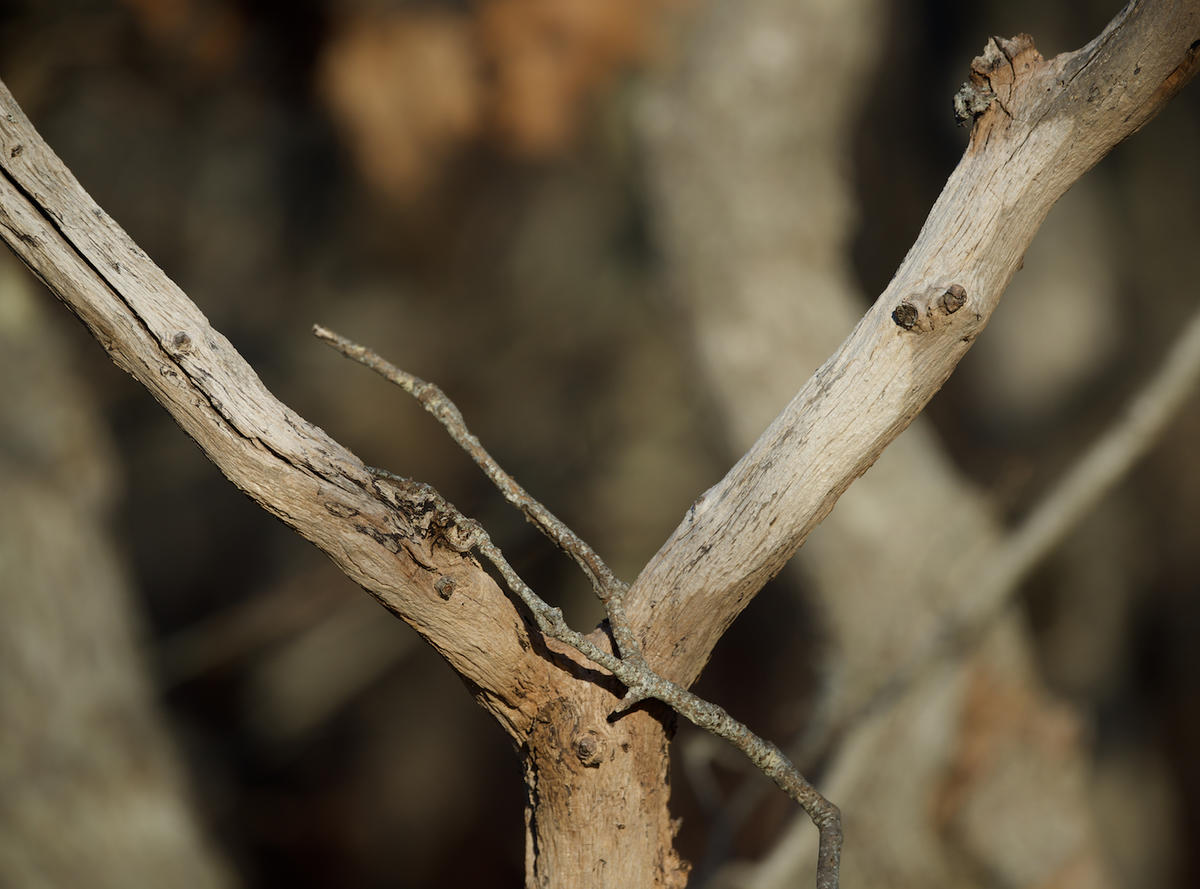
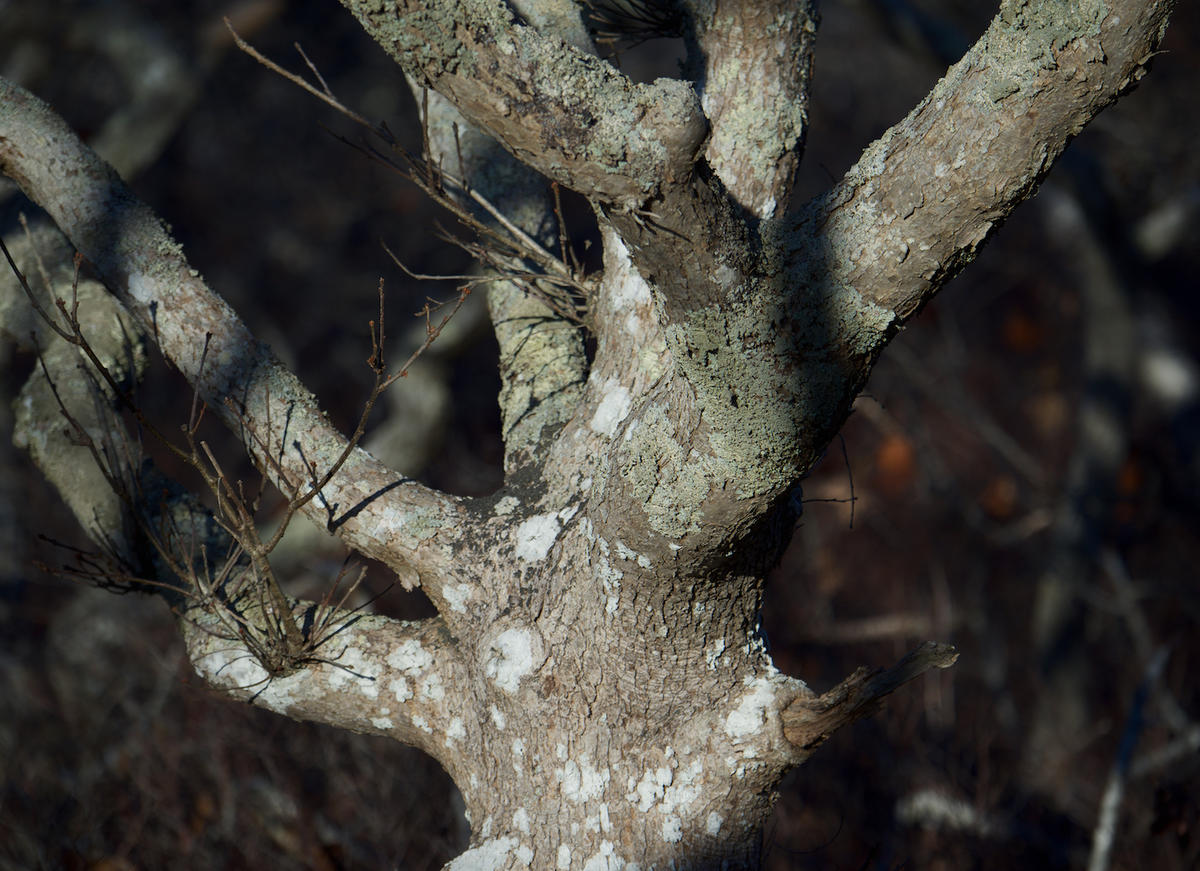
The concept is time, of course. How these trees are doomed to fall into the sea in a week, a month, years or decades.
In reviewing the work now, preparing to include it in the blog, remembering the miracle that was that one day on these two islands, Chappaquiddick and Martha's Vineyard, shooting "Trees" and then driving up island later that same day and shooting the next one, "Sand", it is almost too much to bear. To think this one day would align like that, over countless other days over my career that had not come close or failed or where I hadn't even seen the possibility for something happening at all still leaves me wondering what the hell was going on that day and seriously humbled by it. "Fortuitous" doesn't quite do it justice.
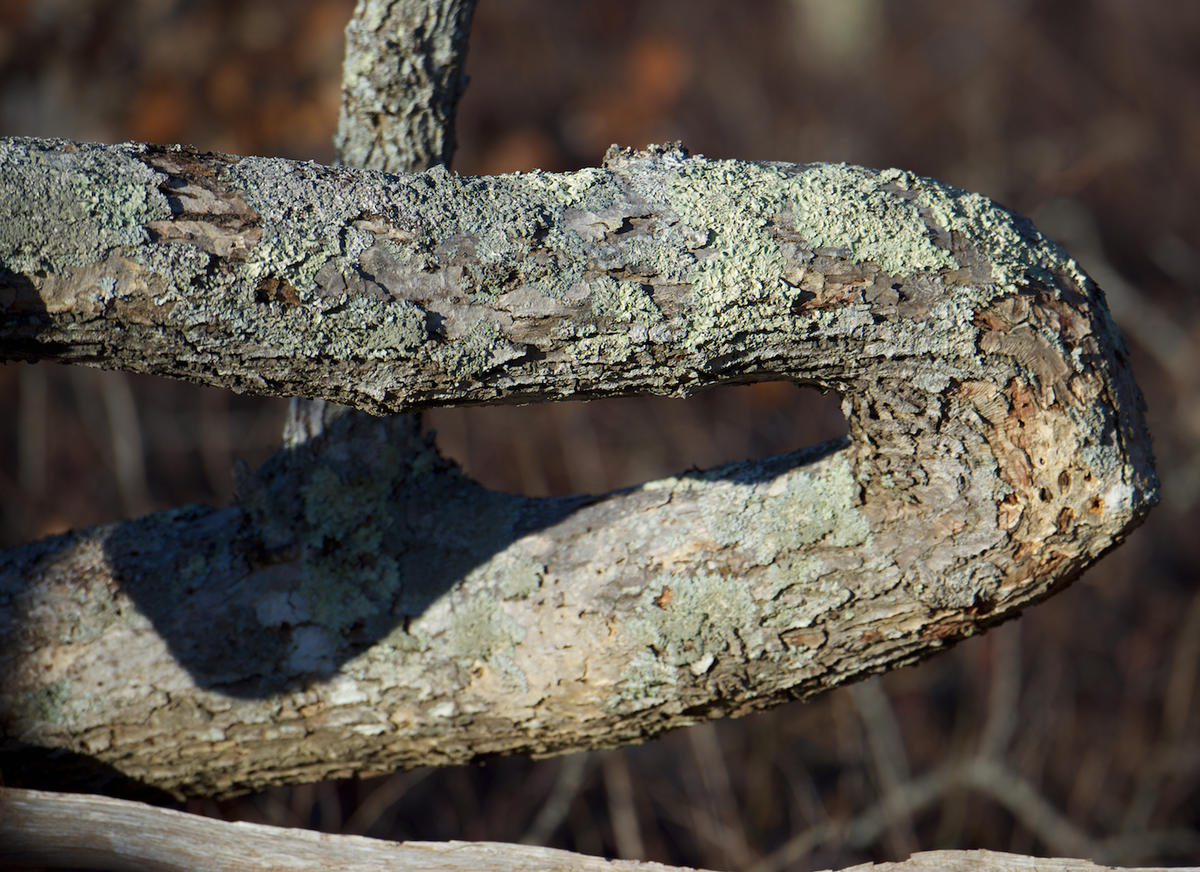
So starts the sequence of three series contained in one book: Trees, Sand and Snow. This intends to imply time as spread out ahead of us as an abstract in that this impending change; the erosion and destruction of this stand of stunted oak trees at Weasque will continue their march to the sea sooner or later, as inevitable as the tide will obliterate the patterns in the beach seen next in the Sand chapter or as the snow covering the concrete skate park in the last chapter called Snow.
I thank you for following along.
Note: Martha's Vineyard is much on my mind as I leave later this week for a month on the island. The month of May can be a tease as, due to surrounding cold water, the island is late to come to spring. This tends to make it wet and foggy. Can't wait.
Next post will be "Sand", the second chapter in the book.
Loyal readers, you are forewarned. This is going to be an old guy's post with no apologies.We wouldn't think to apologize for our age at 25, so why at 71? Probably because we don't want to admit to diminished capacity. While I freely admit that's true, look at the increased wisdom, perspective and sheer amount of experience that rides along with seniority. I think I've got that (but I may be senile), so here goes.
In NYC for a few days last week I am struck by how many people live here, how friendly New Yorkers can be, how it all works somehow, how dirty it is, how it seems everyone is plugged in, on their phones, wearing earphones and walking very fast. I know, old guy stuff. One of the things that happens when you age is that your world becomes smaller, closes in to be fewer experiences in a smaller sphere. Well, going to New York is completely expanding, at least for me.
Photographing here can be frustrating as NY has a way of making your pictures seem insignificant and/or touristy. NY is overwhelming to someone like me who gets here only occasionally. Always exciting it is also enervating, as it speaks to a faster pace, to a relentless mass of humanity in a hurry, meaning it seems you have to join the wave. I am always exhausted by the time I leave.
I took the Acela train down and back from Boston, a very nice ride. A little over three hours: no airport, no security, no adjusting to the altitude, no bad air, no abusive public transportation to get into the city, and a reasonably good meal. Plus, something to look as you ride along. I made pictures on the way down and back from Boston.
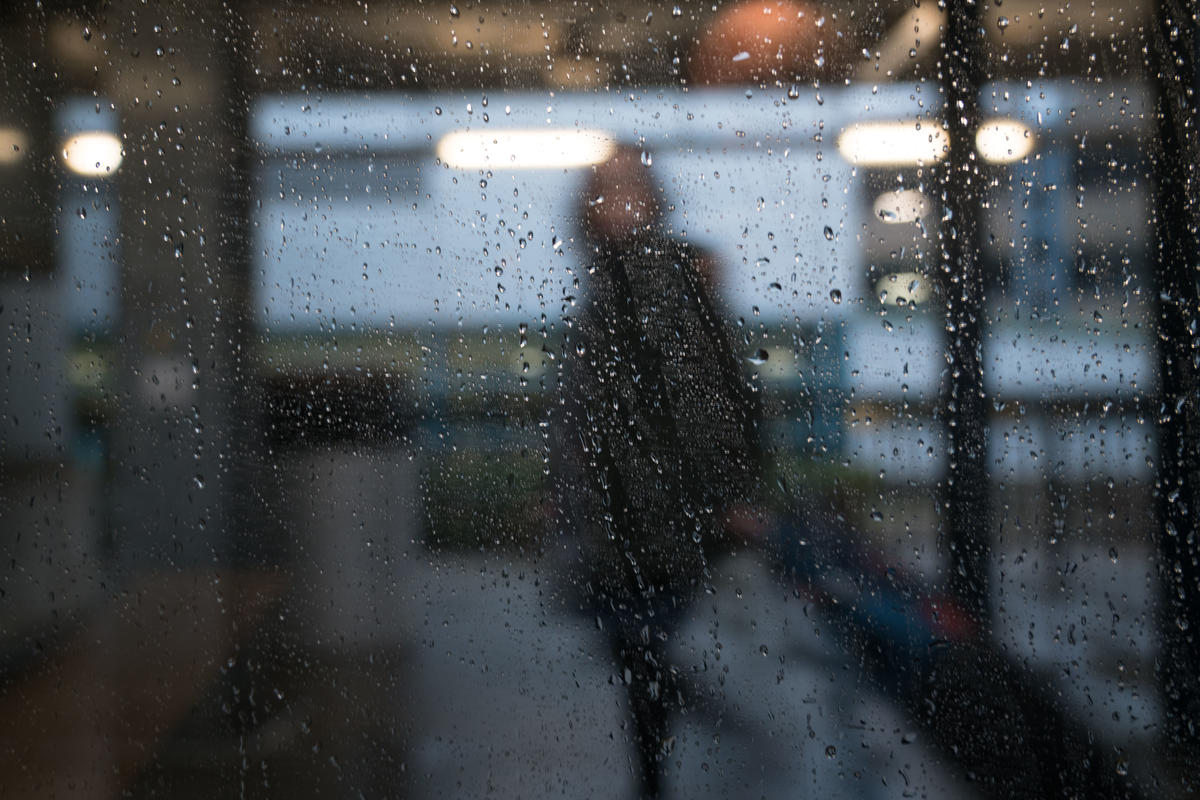
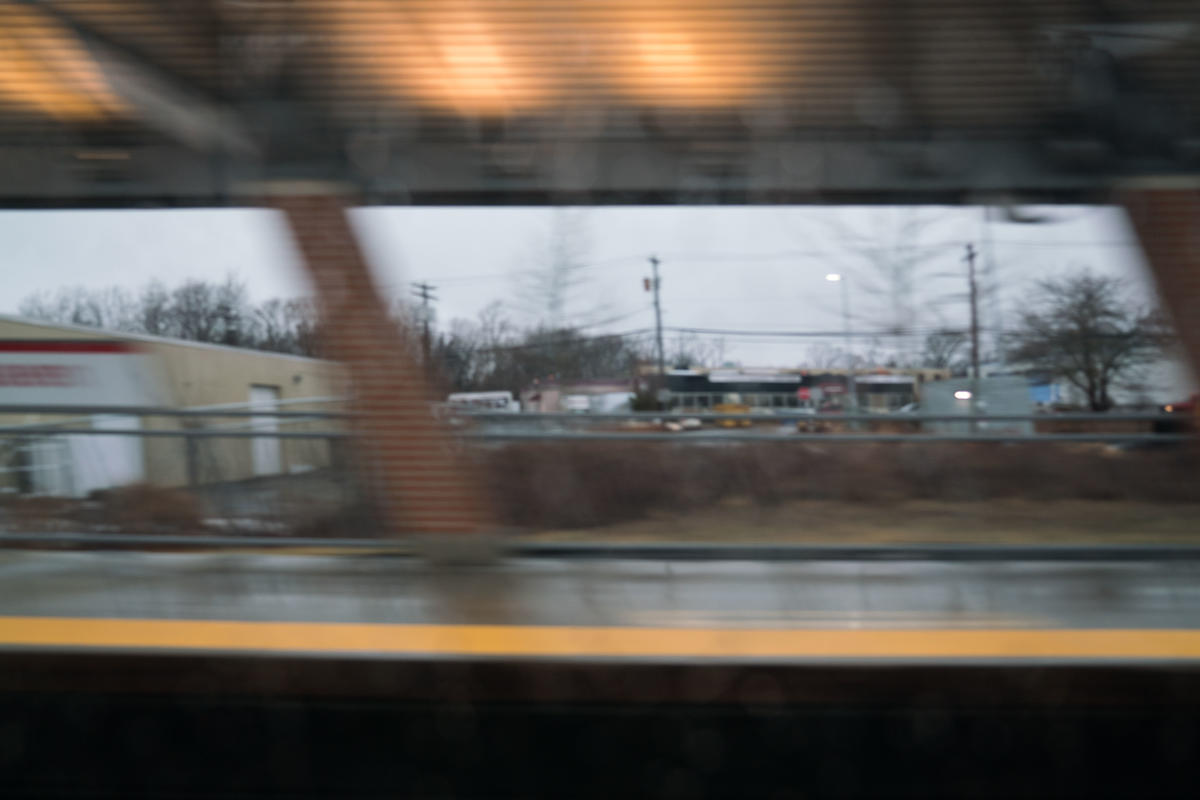 I claim no originality on these at all for friend Michael Hintlian (website here) is the king of this and it is through his work that I understood the possibilities in working this way.
I claim no originality on these at all for friend Michael Hintlian (website here) is the king of this and it is through his work that I understood the possibilities in working this way.
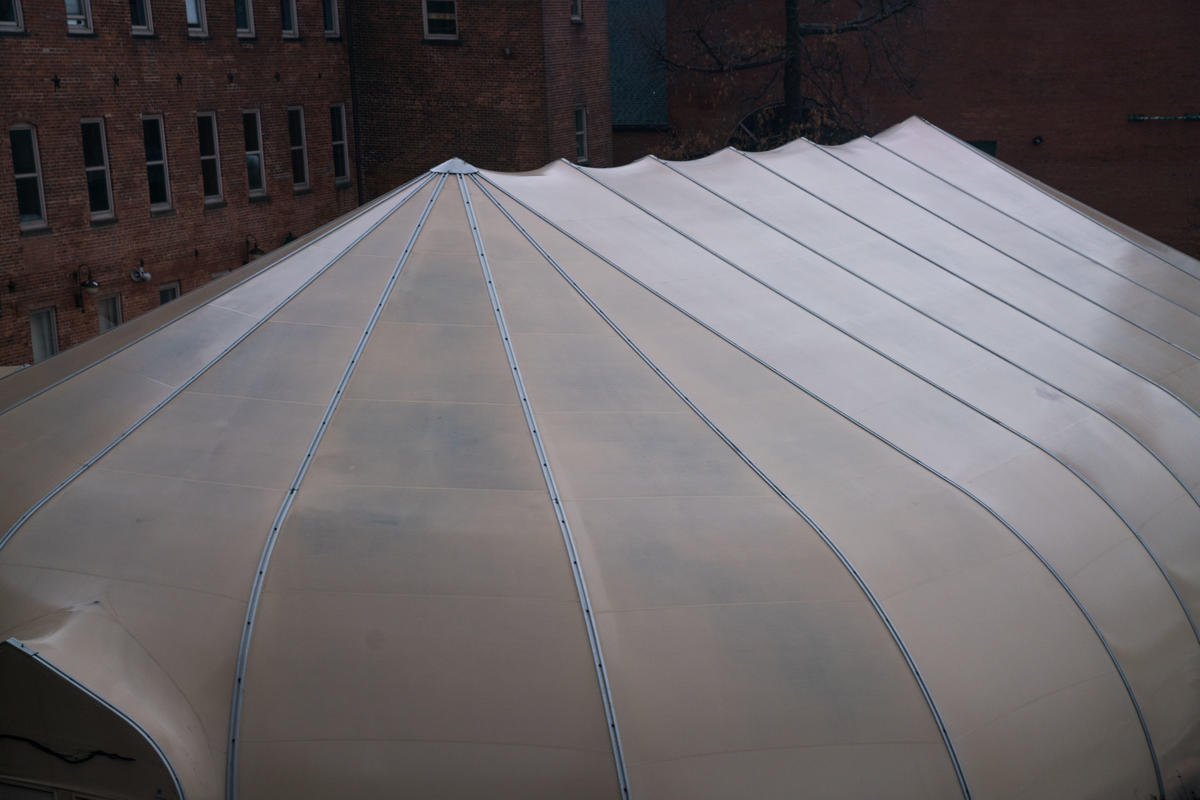
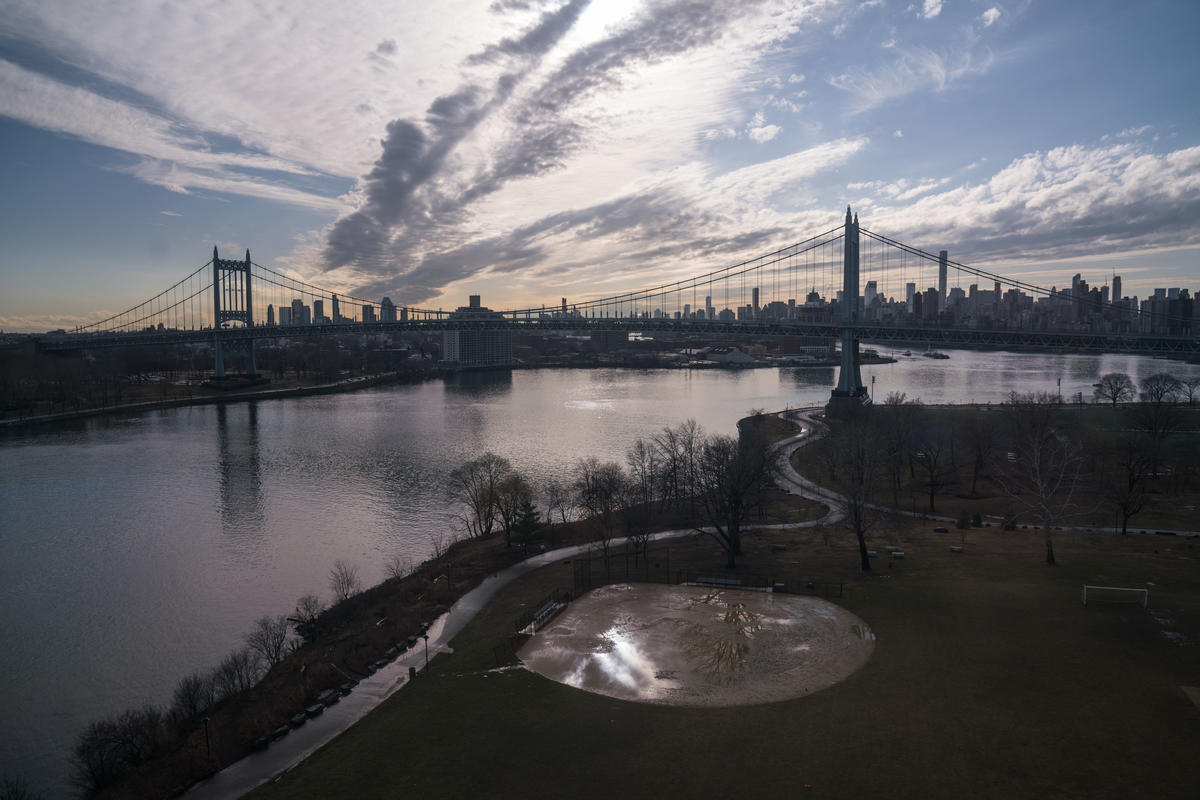
This requires huge quantity to get just a few. The way down was rainy, the ride back up at dawn was sunny.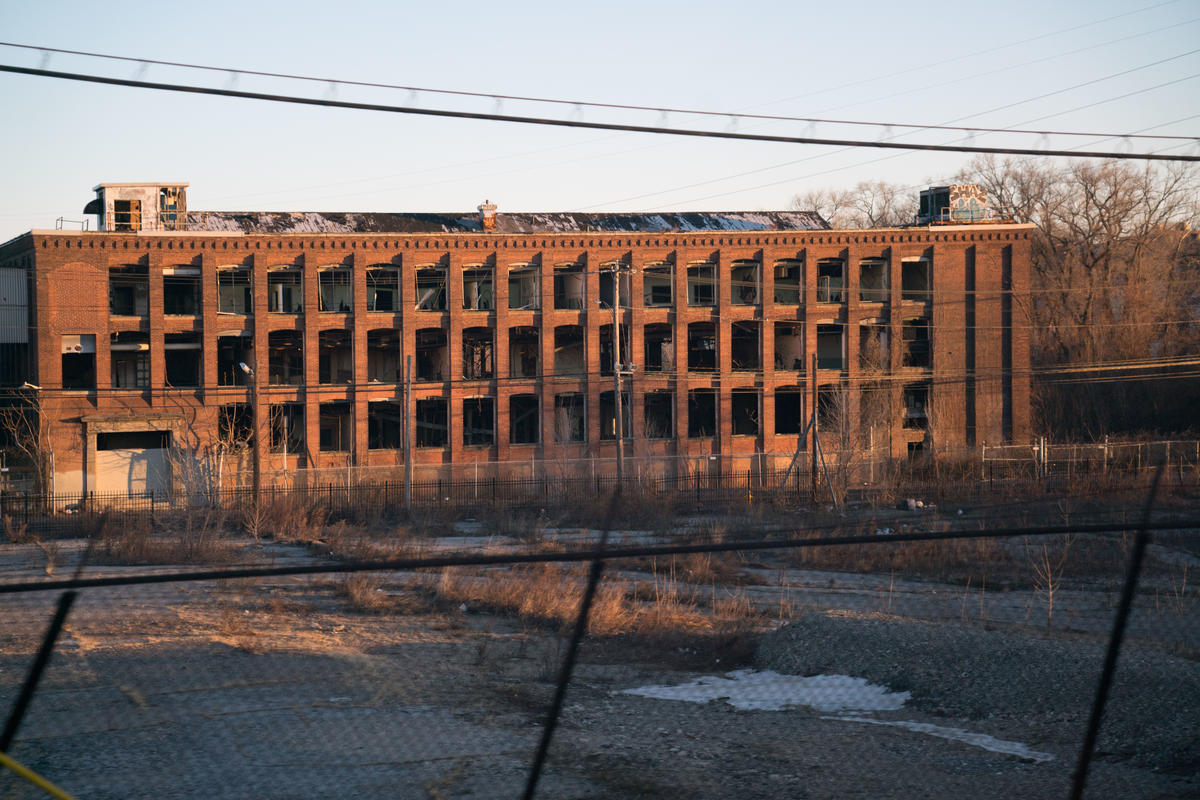
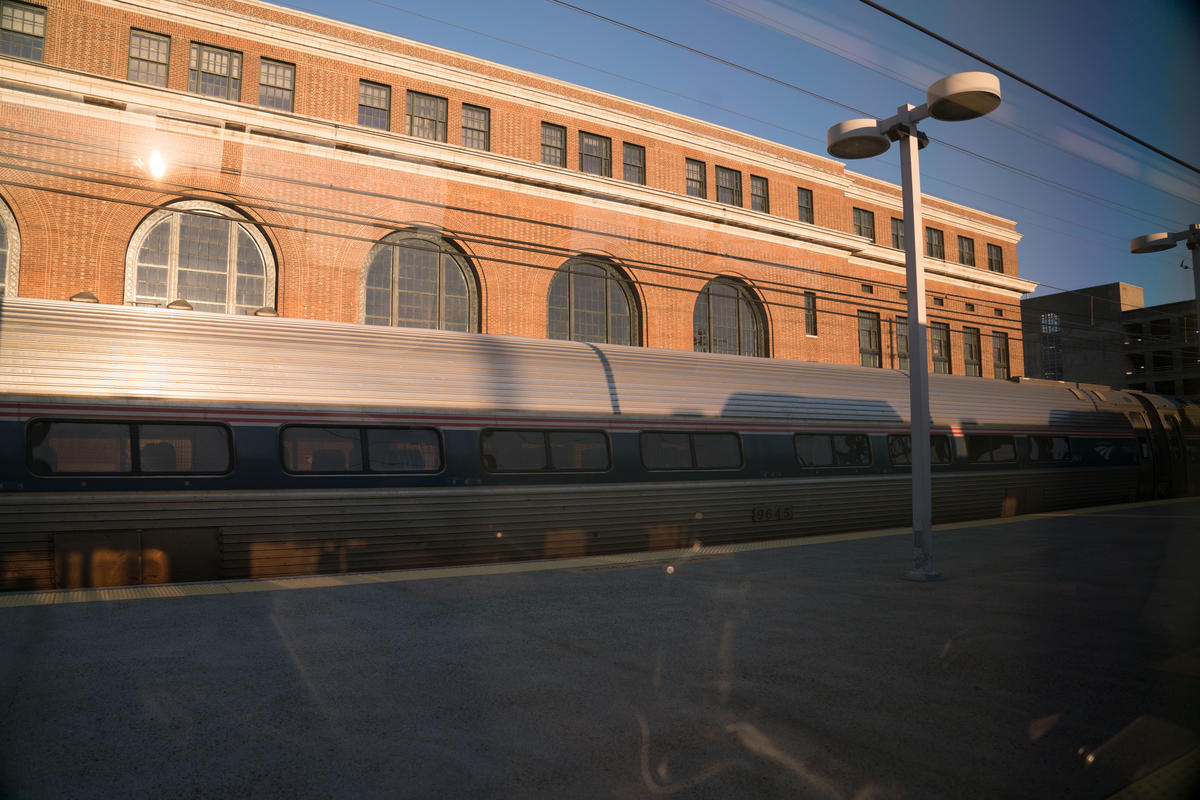
Next up, what I made pictures of while I was in NYC.I love New York.




 It was wild. The wind was coming from on shore so it whipped the water right off the top of the breaking waves.
It was wild. The wind was coming from on shore so it whipped the water right off the top of the breaking waves.



 Edgartown
Edgartown


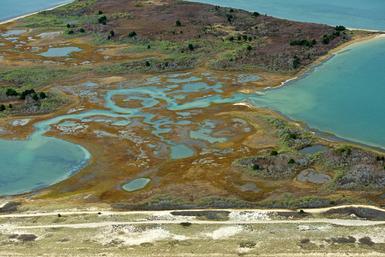
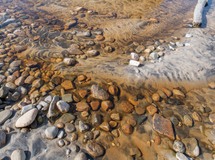
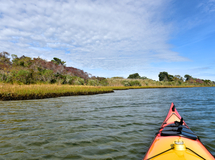
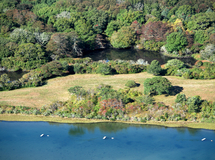







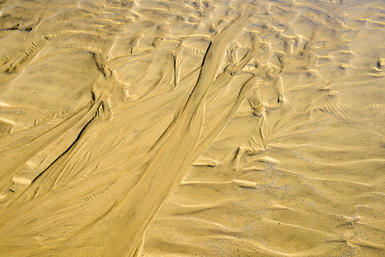
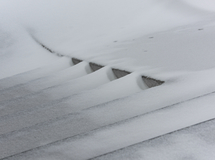








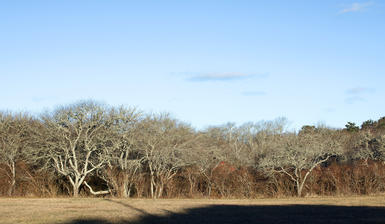








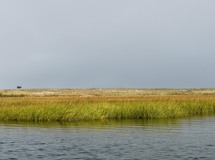

 I claim no originality on these at all for friend Michael Hintlian (
I claim no originality on these at all for friend Michael Hintlian (



